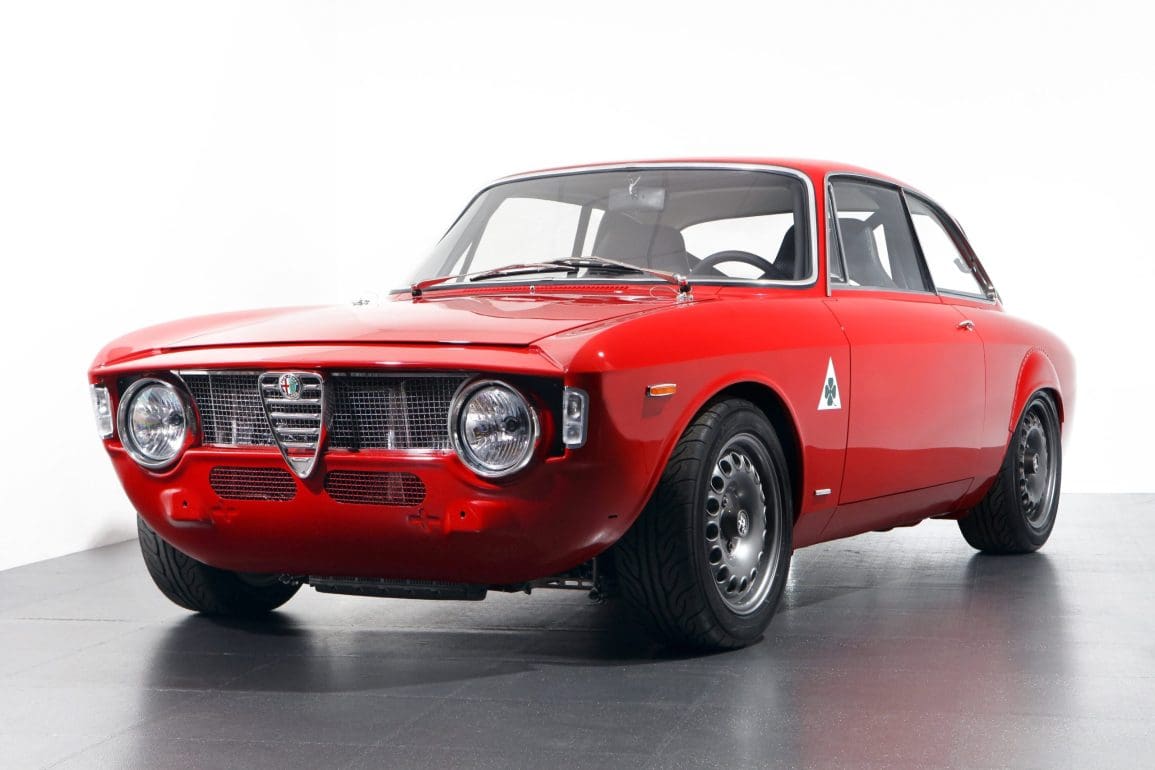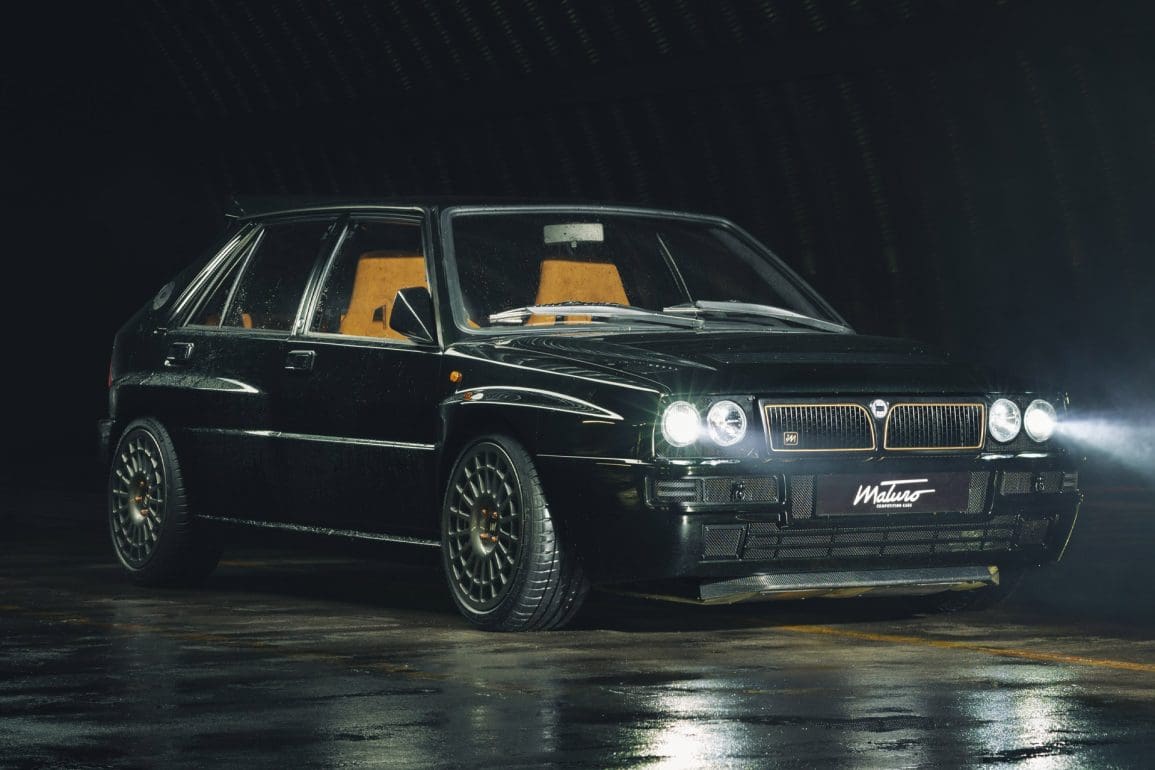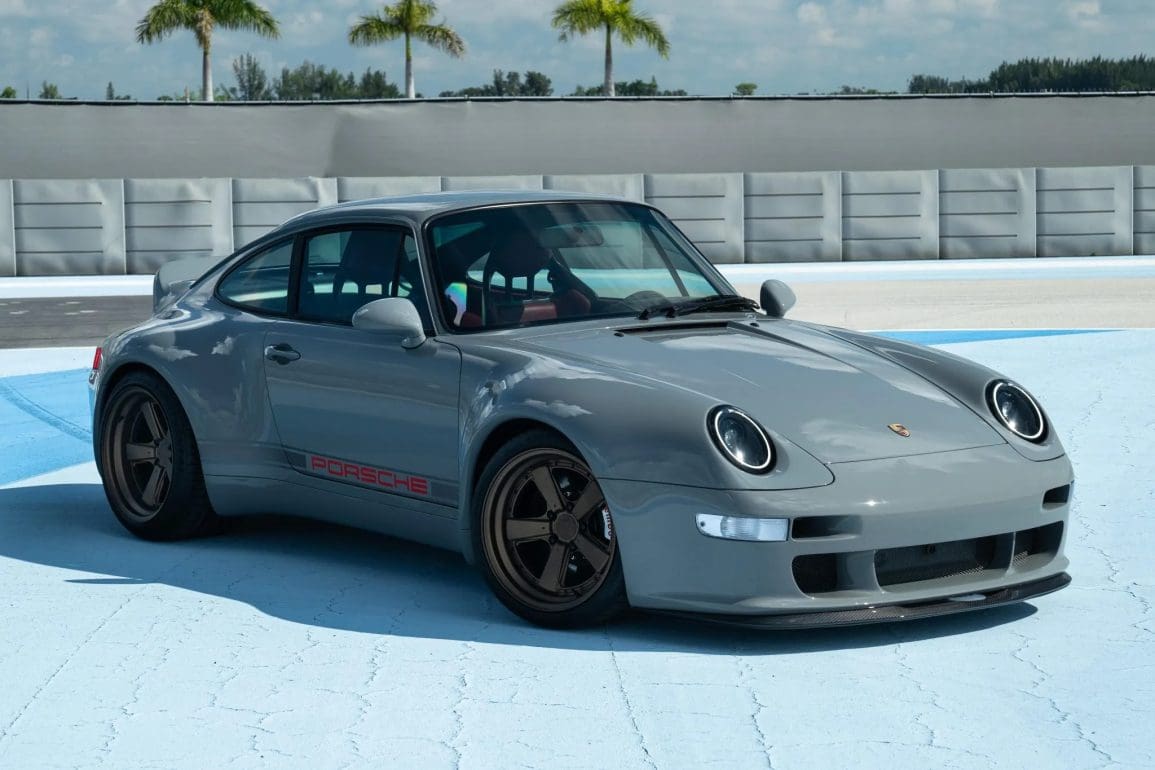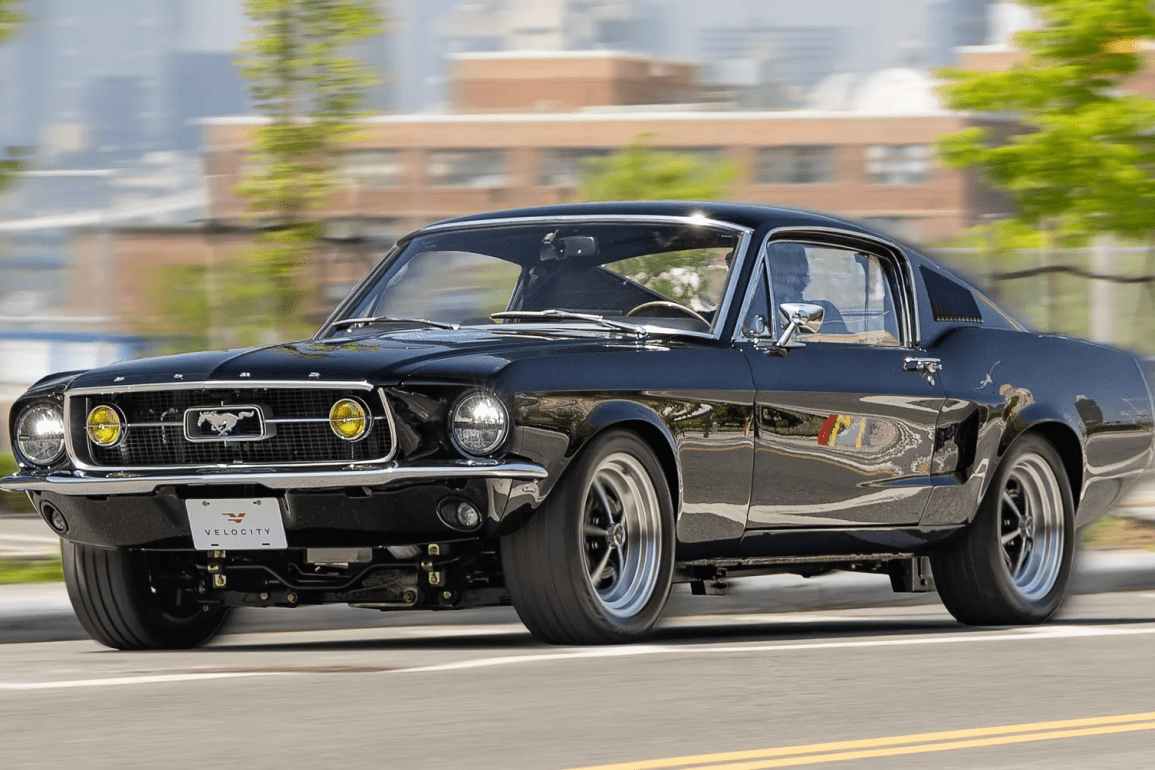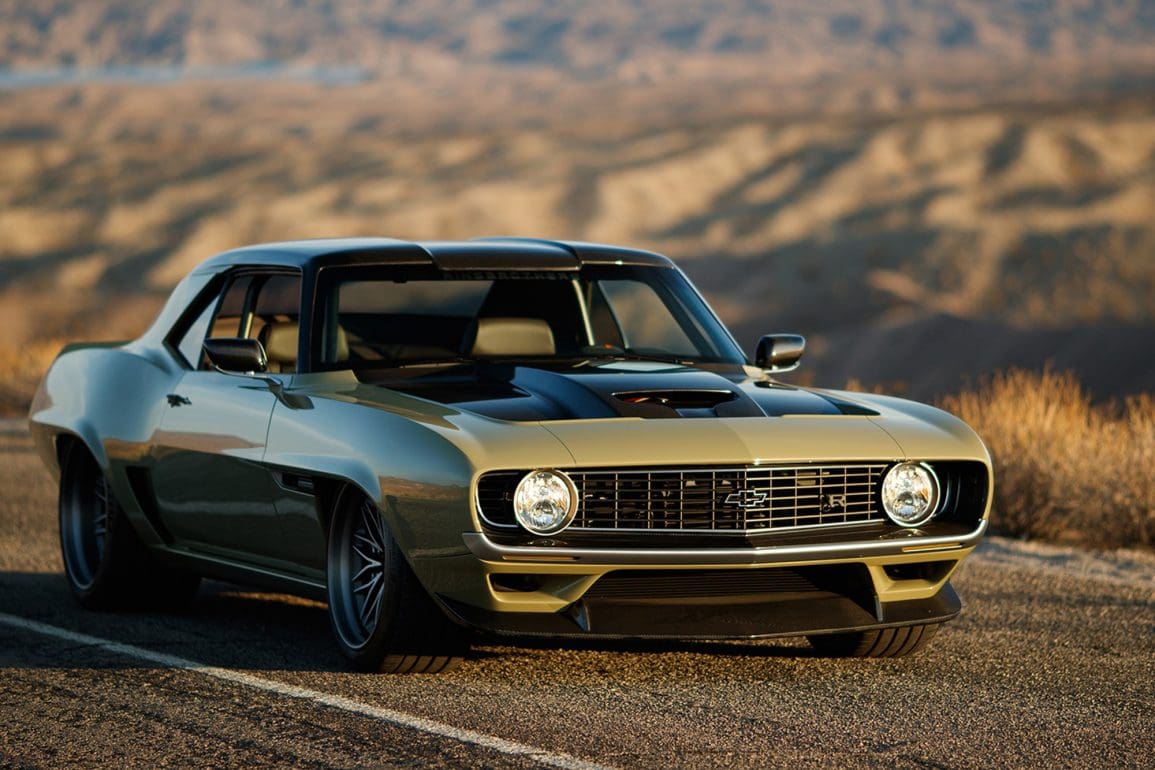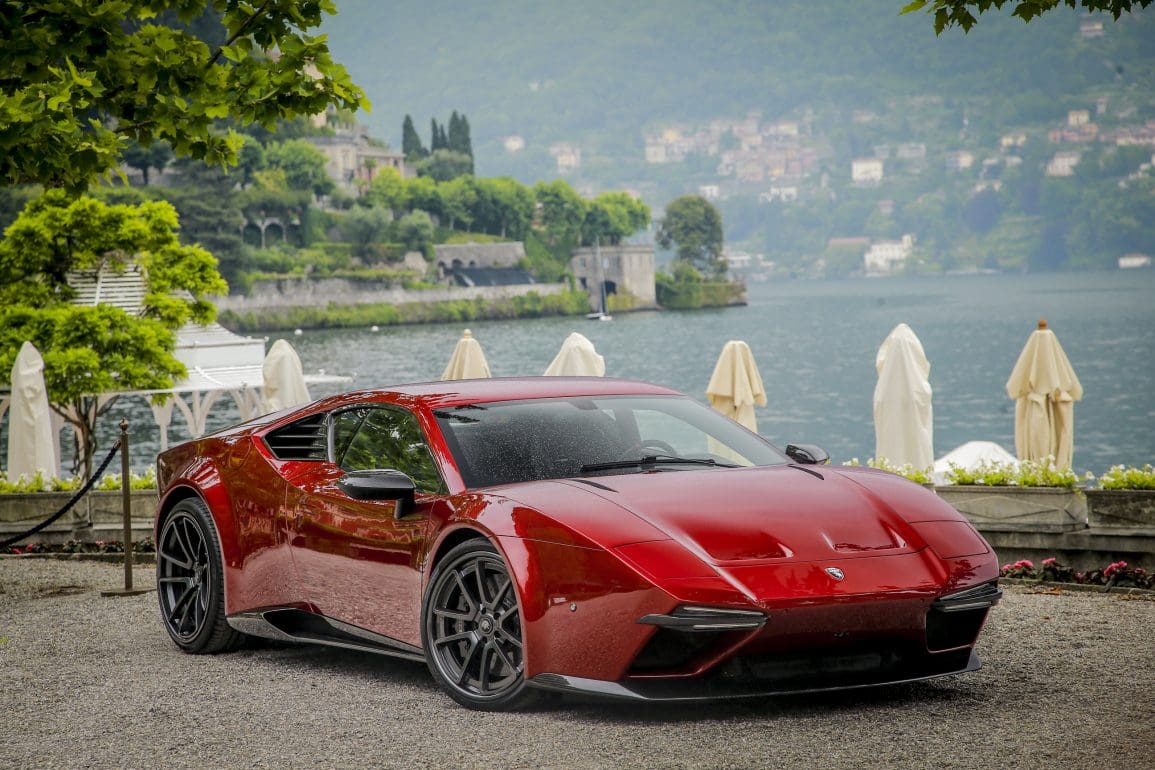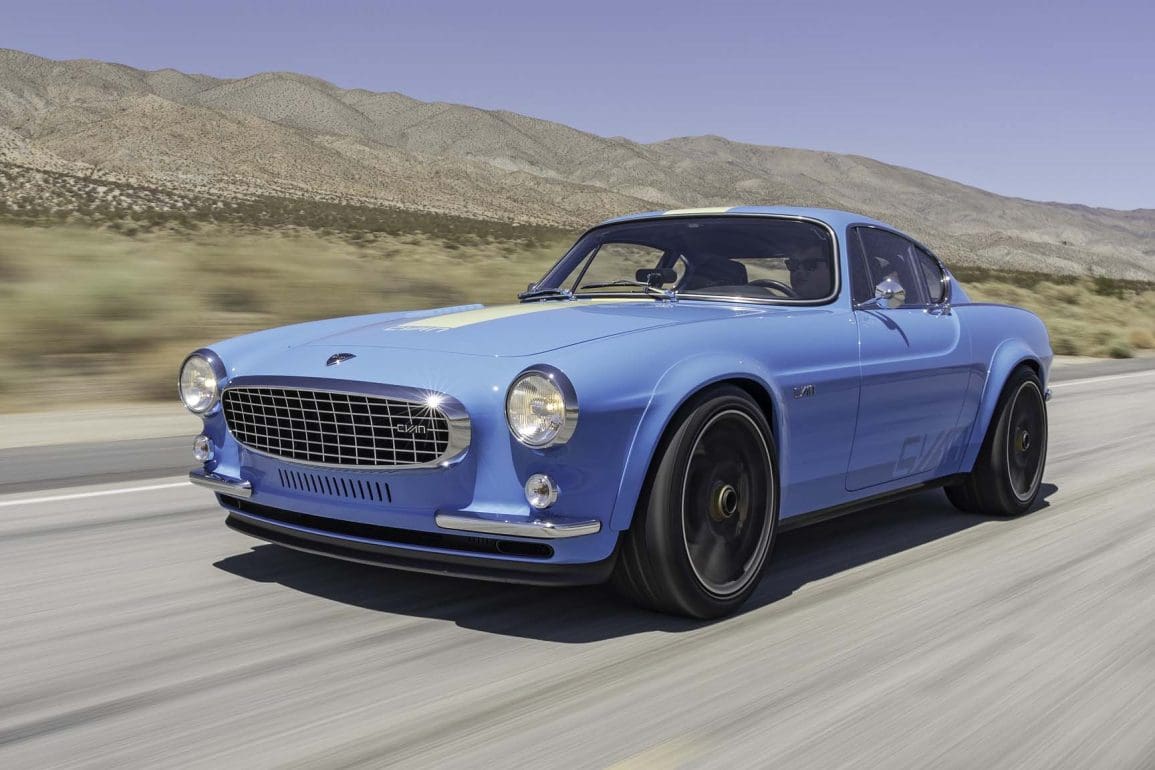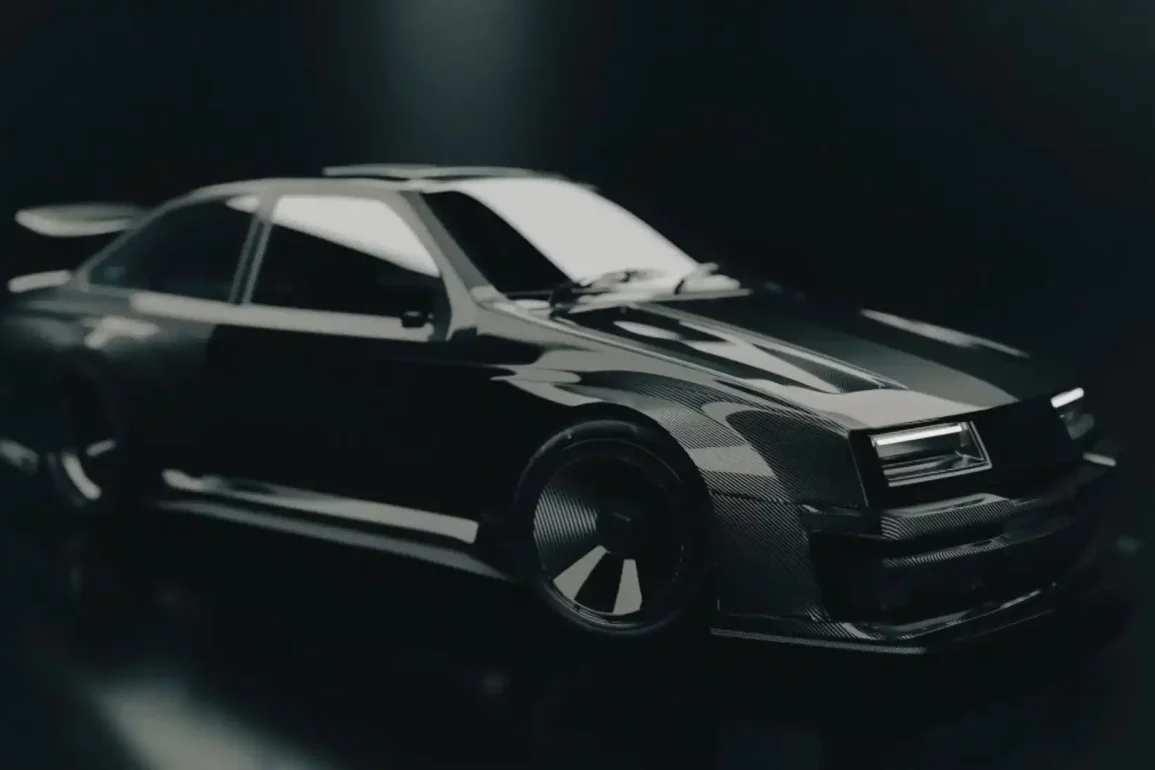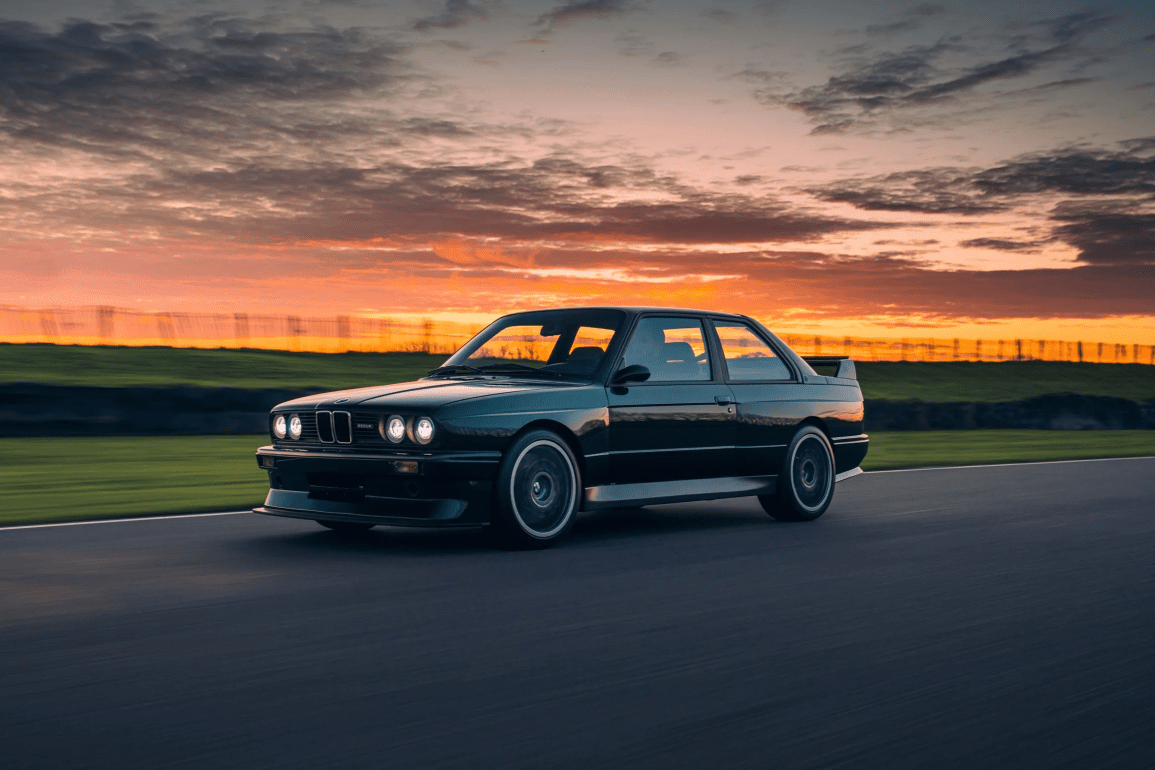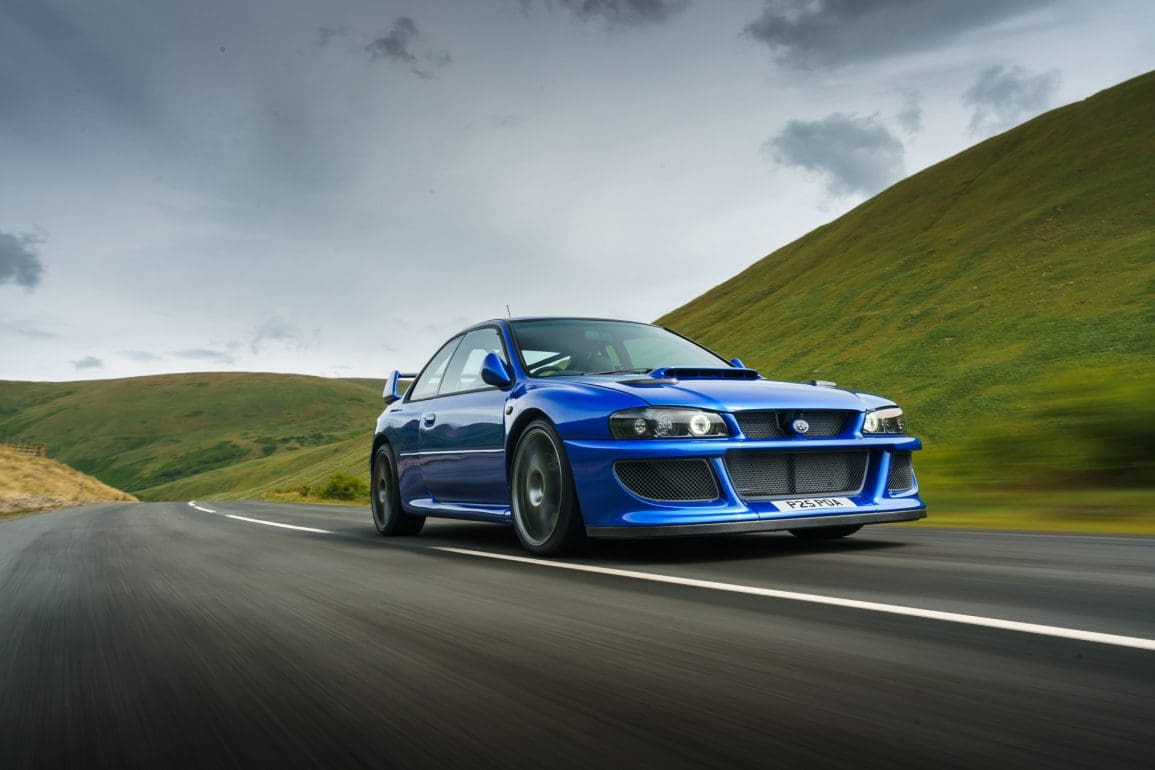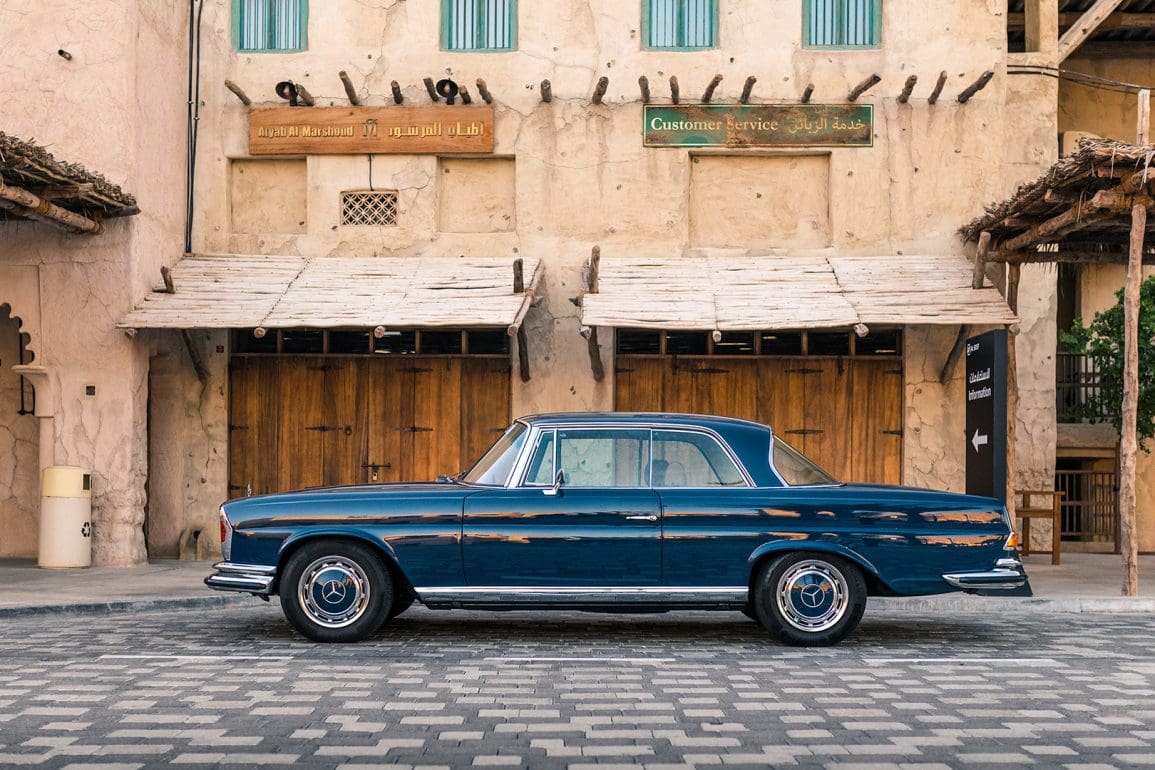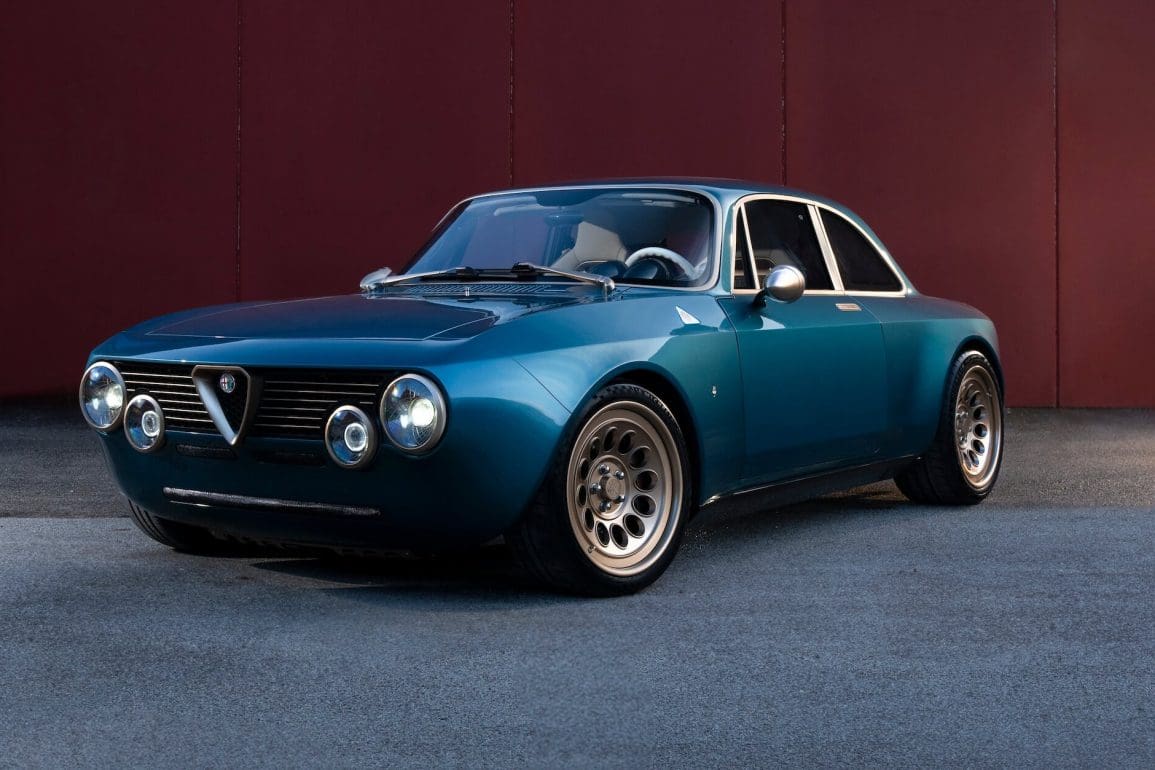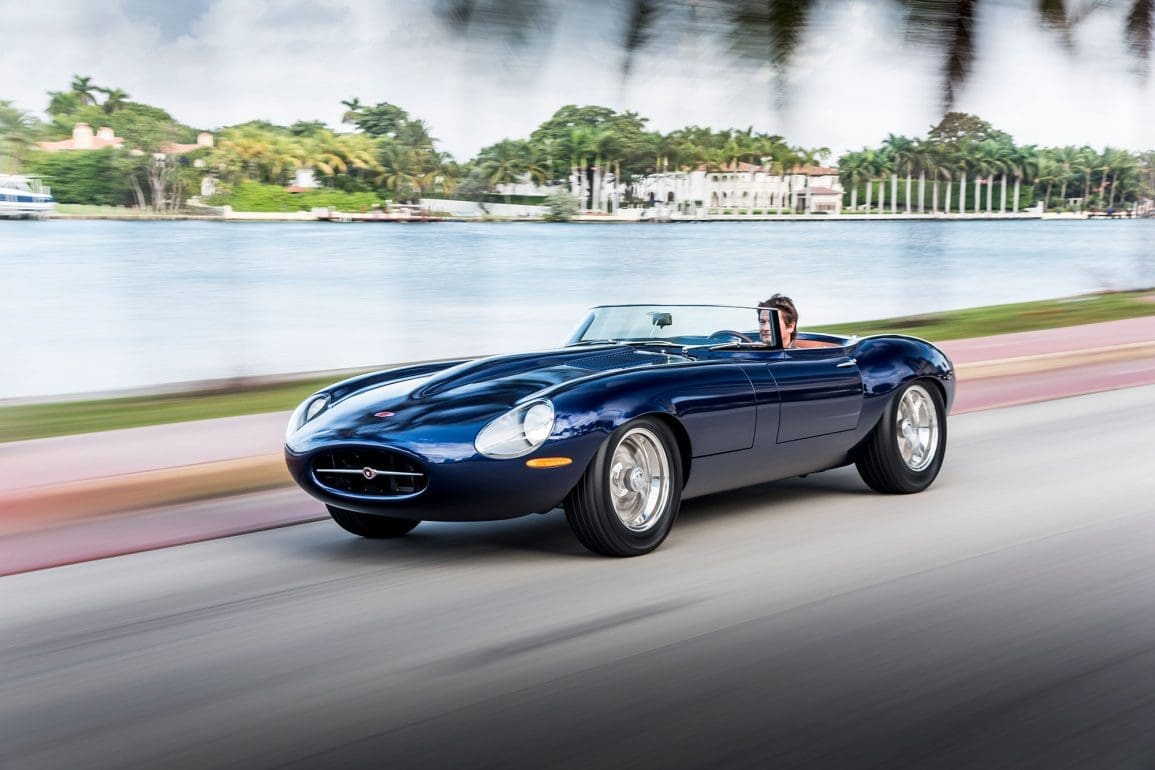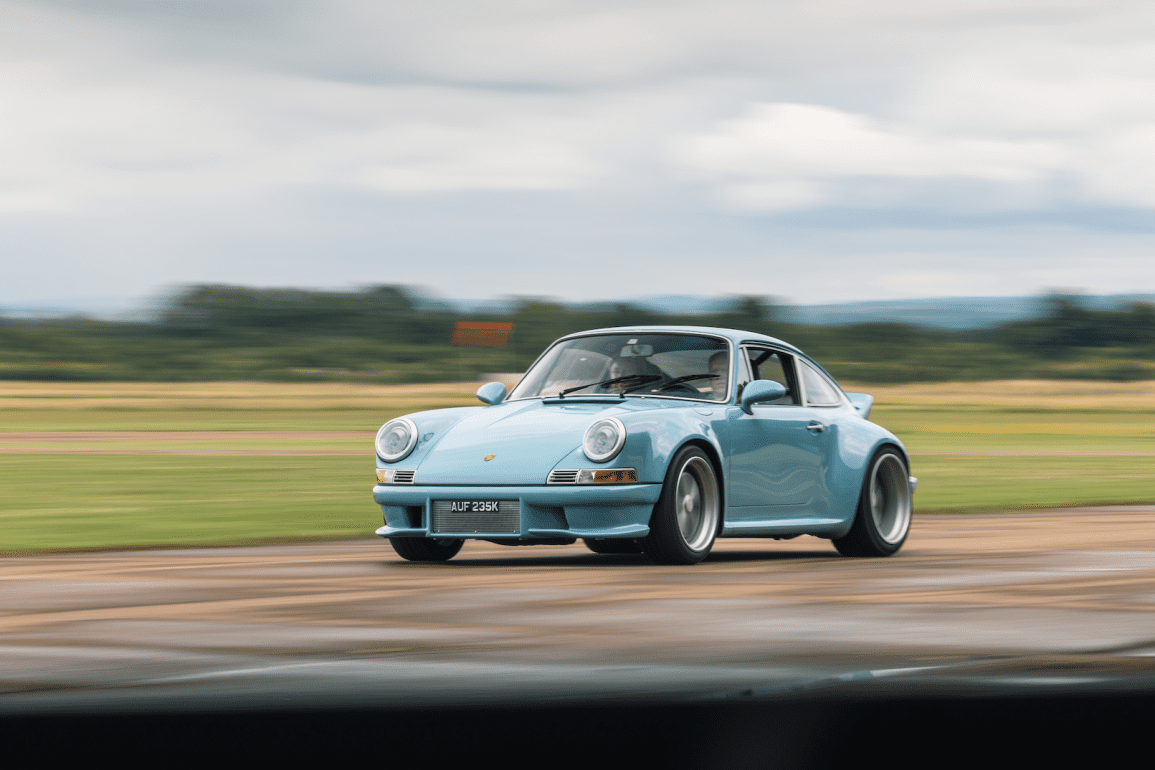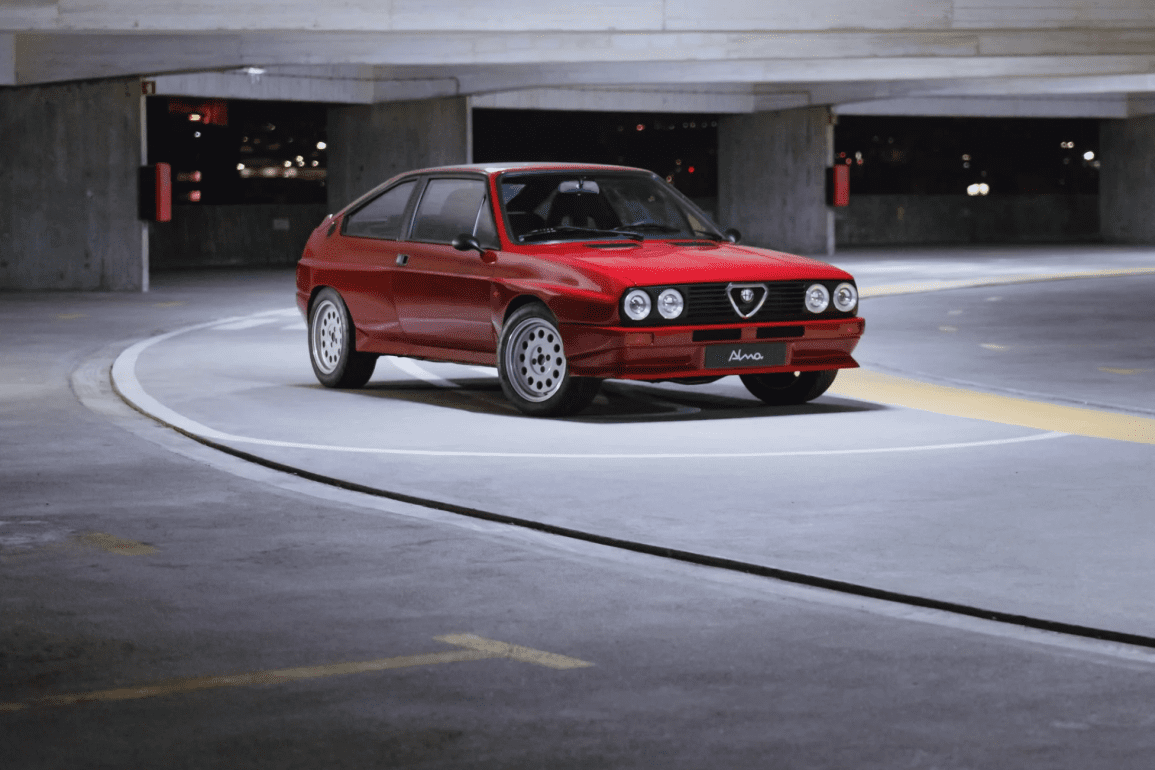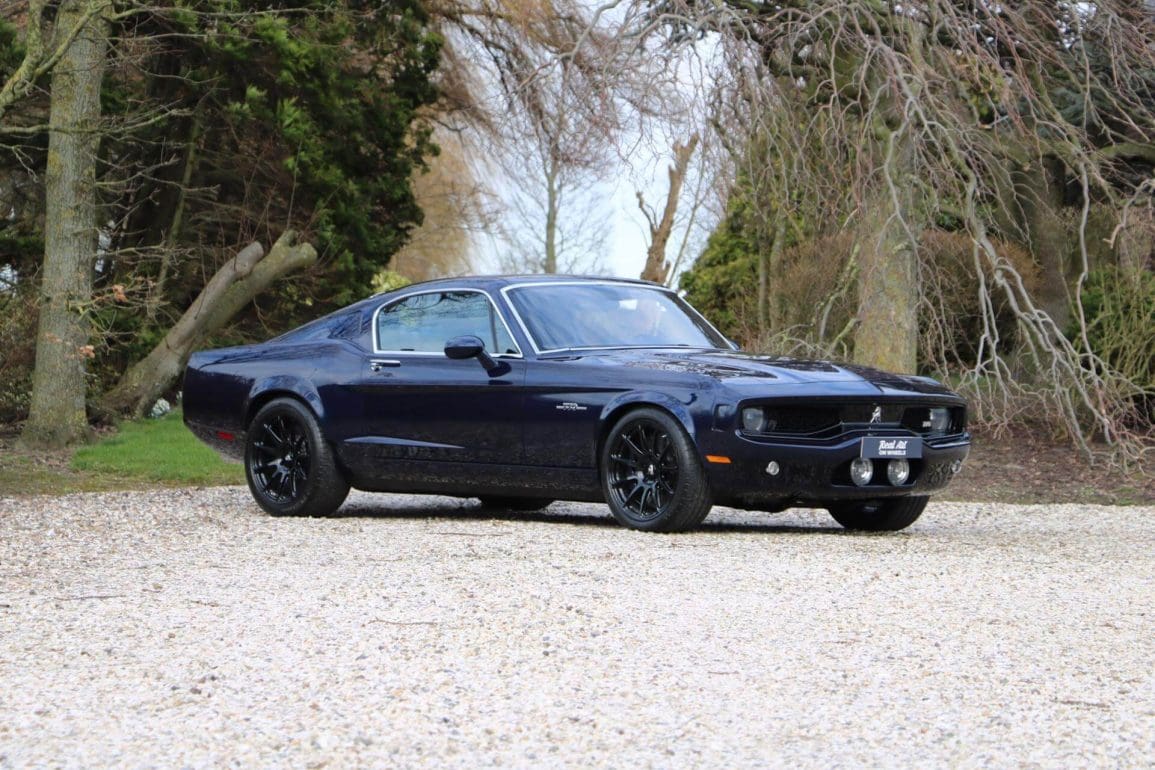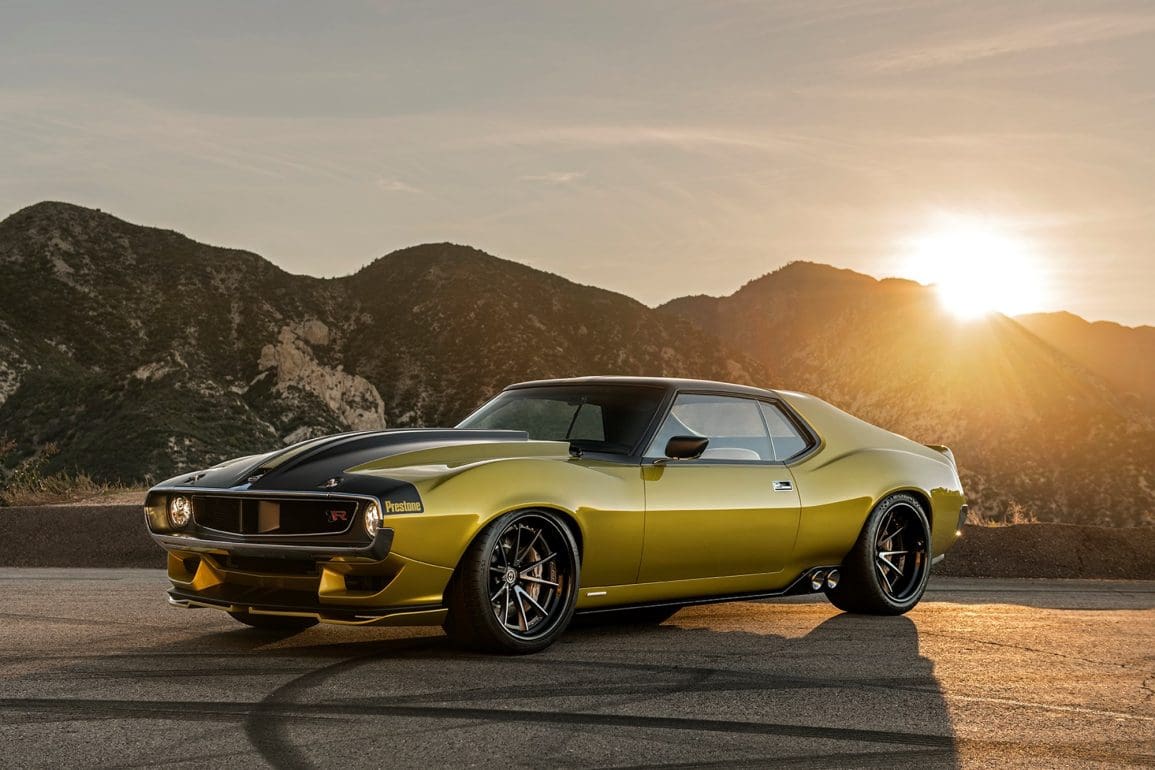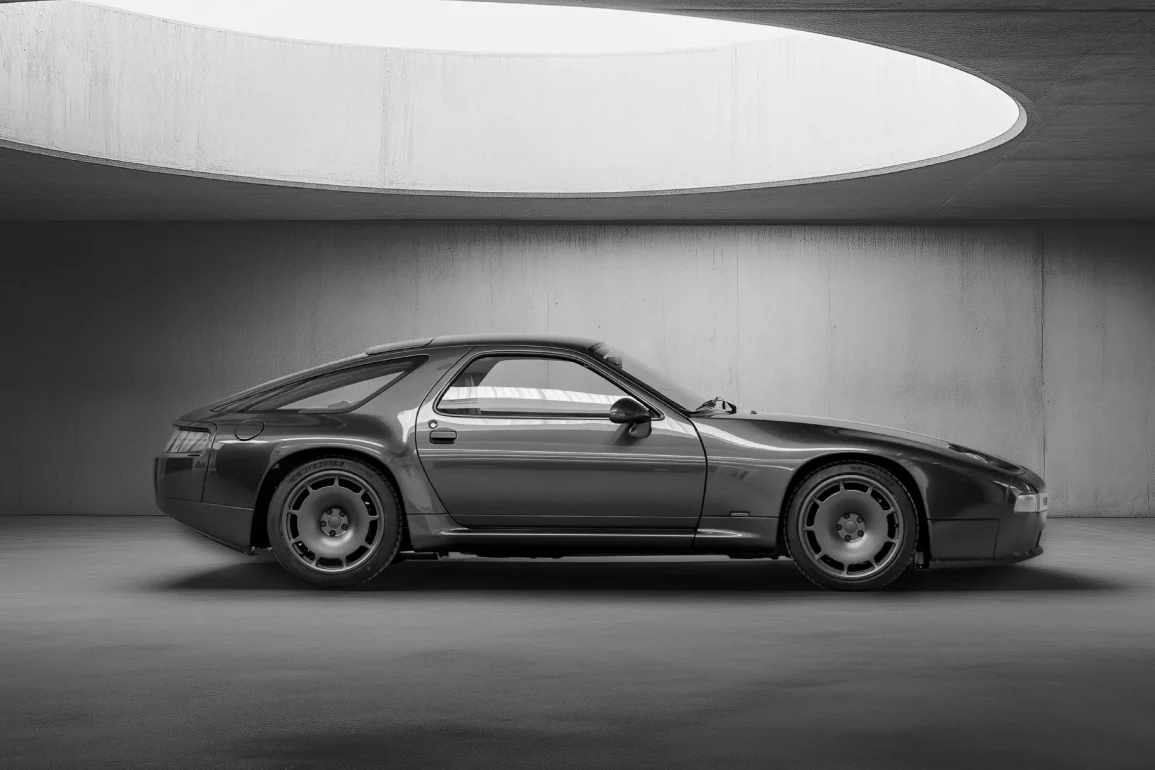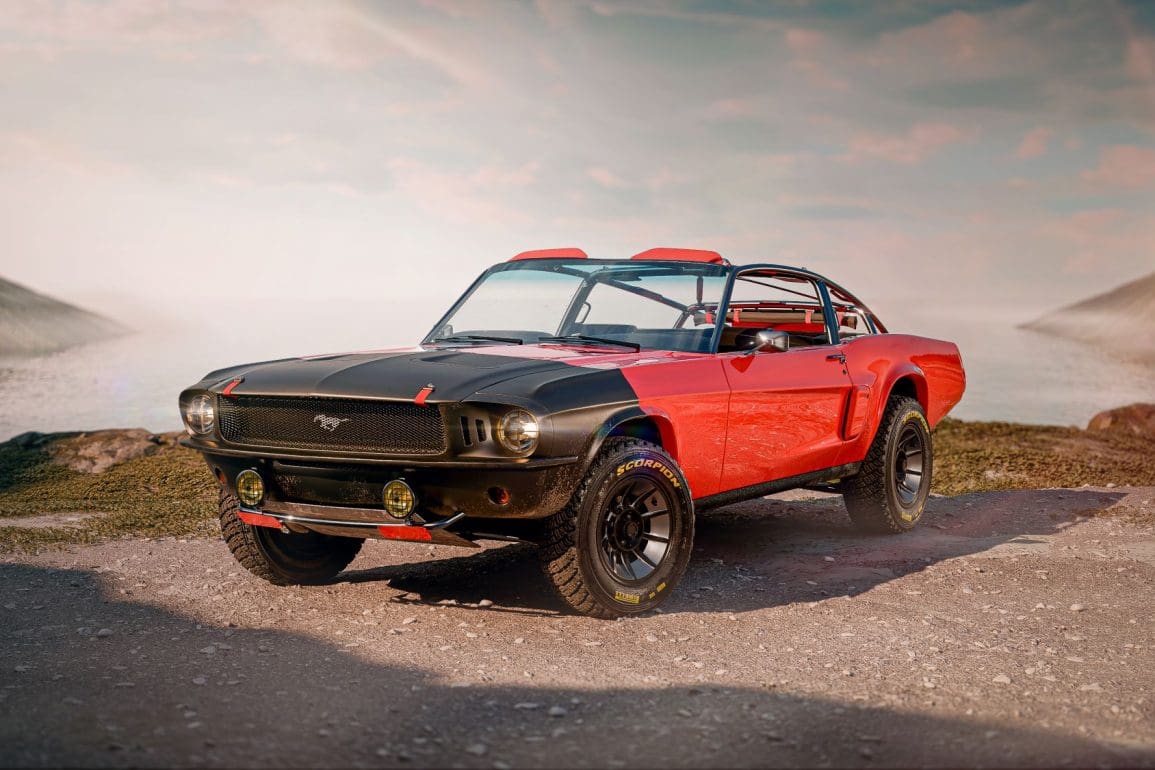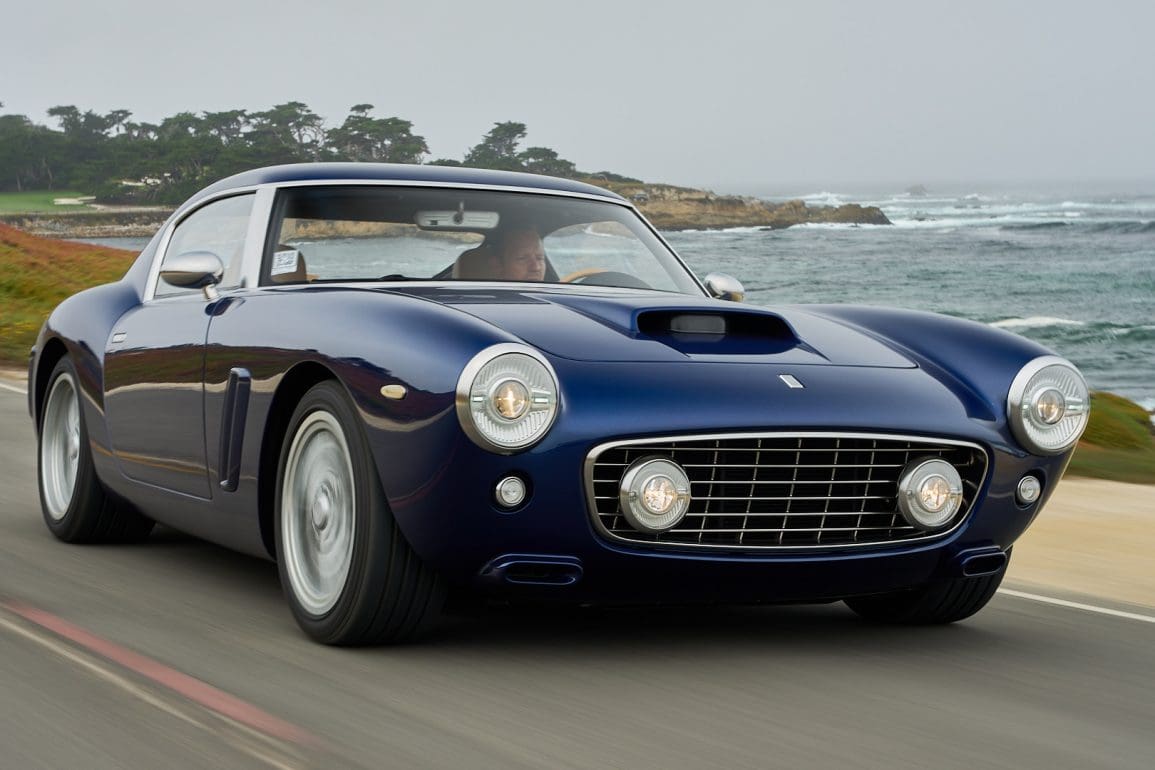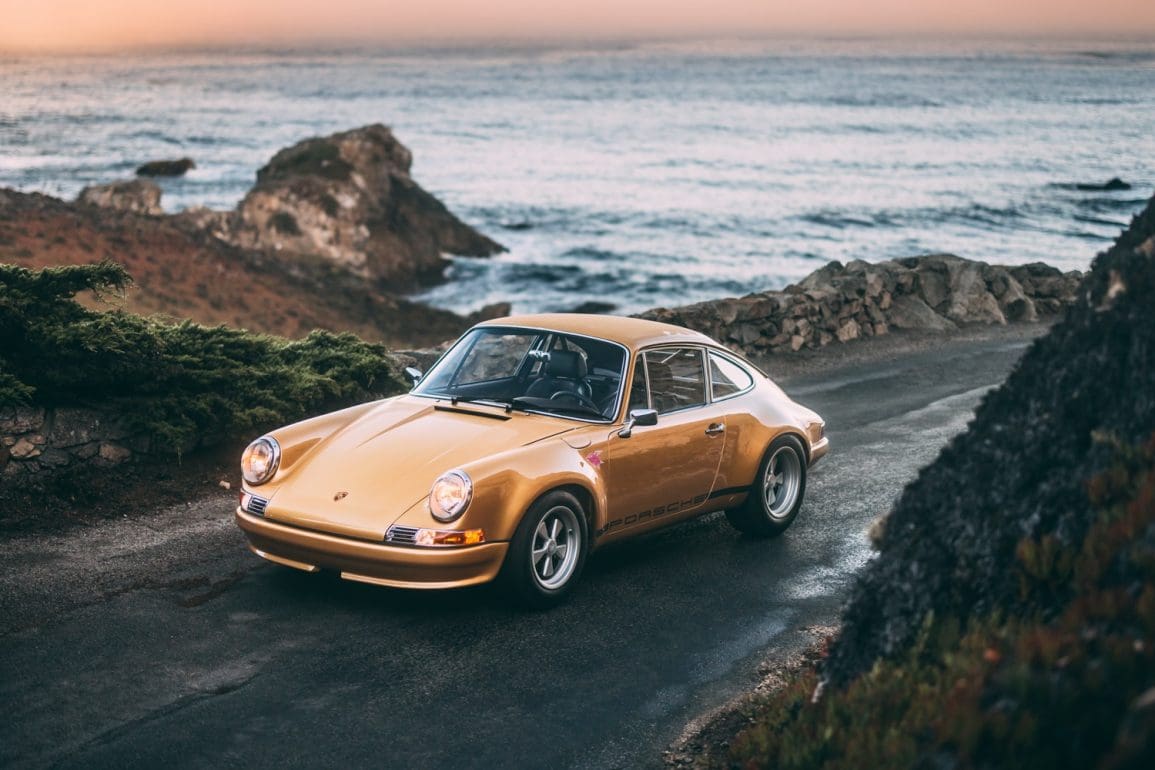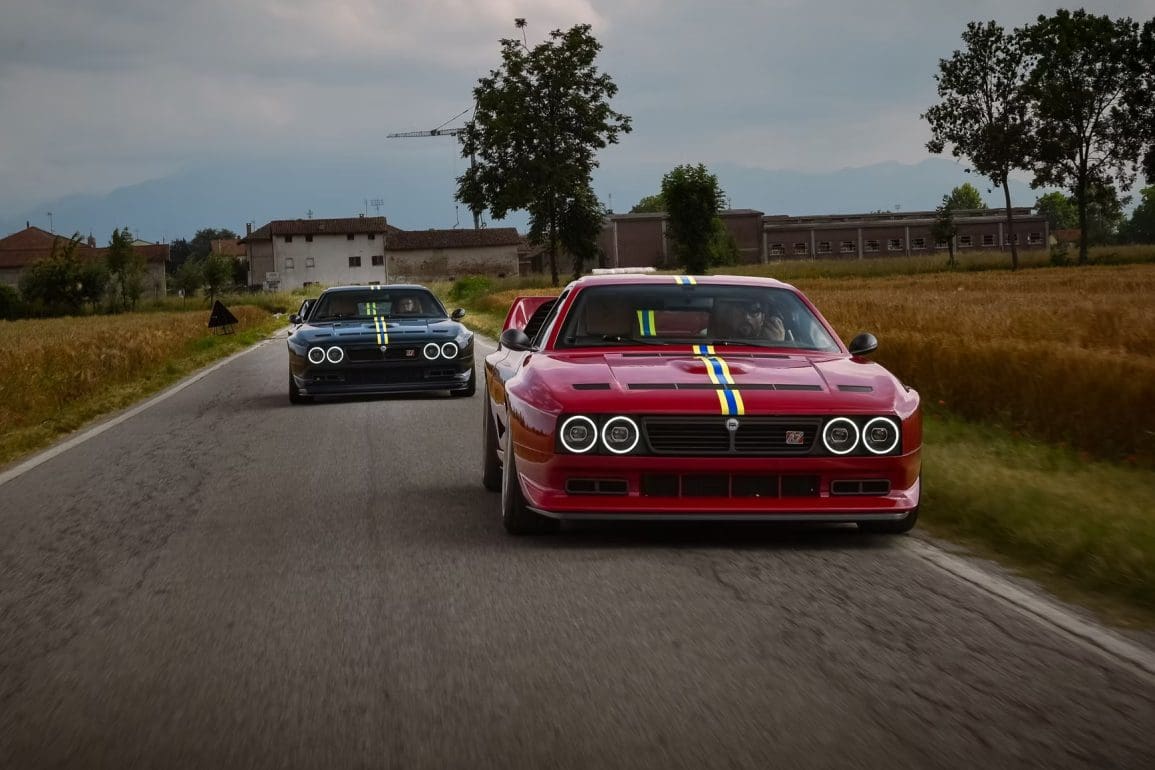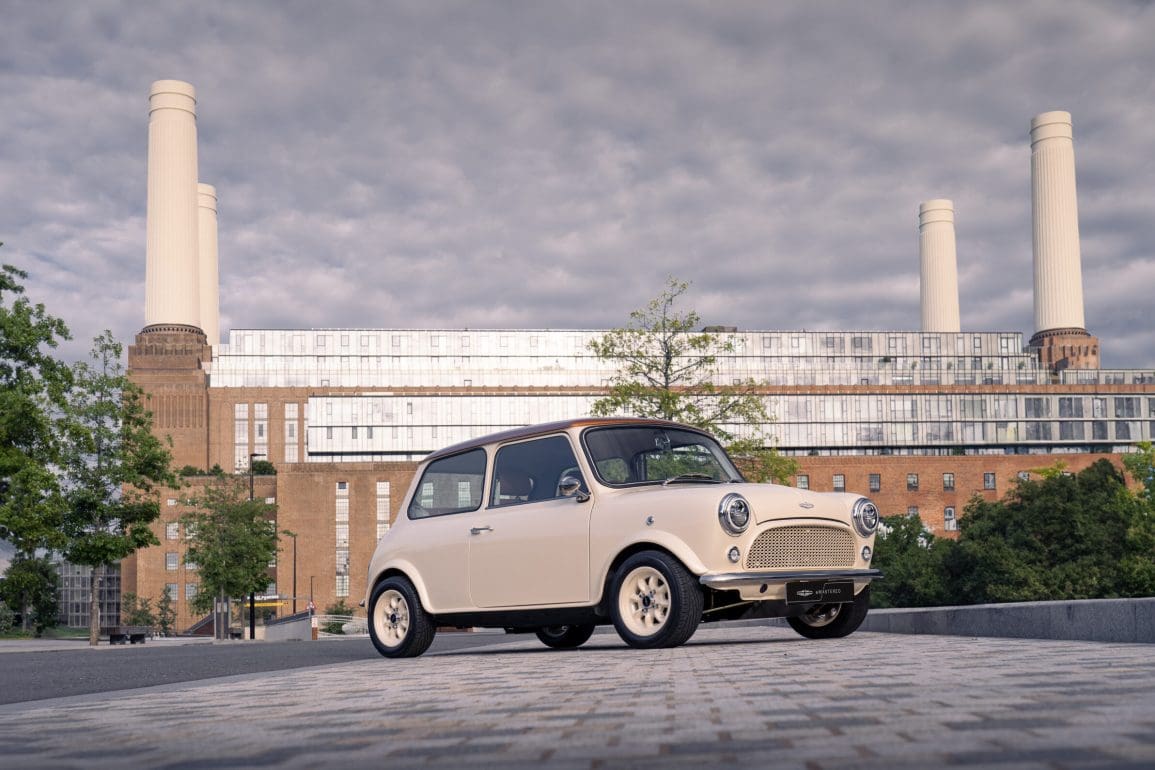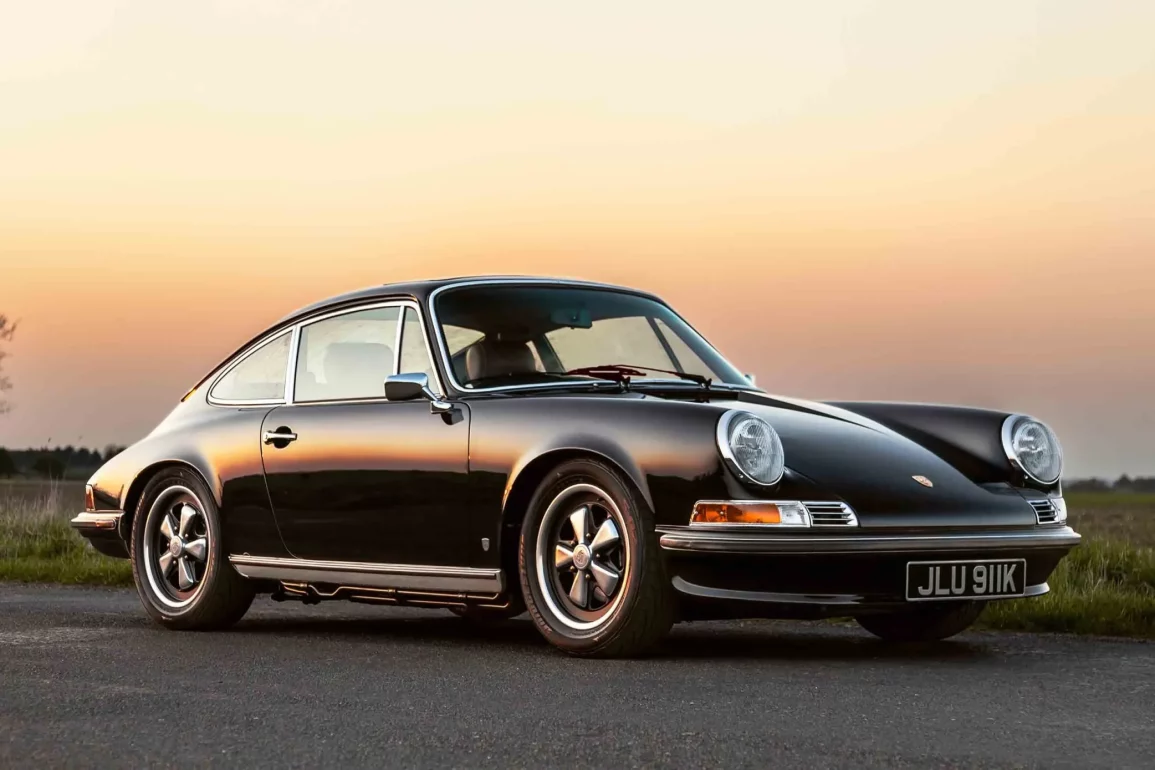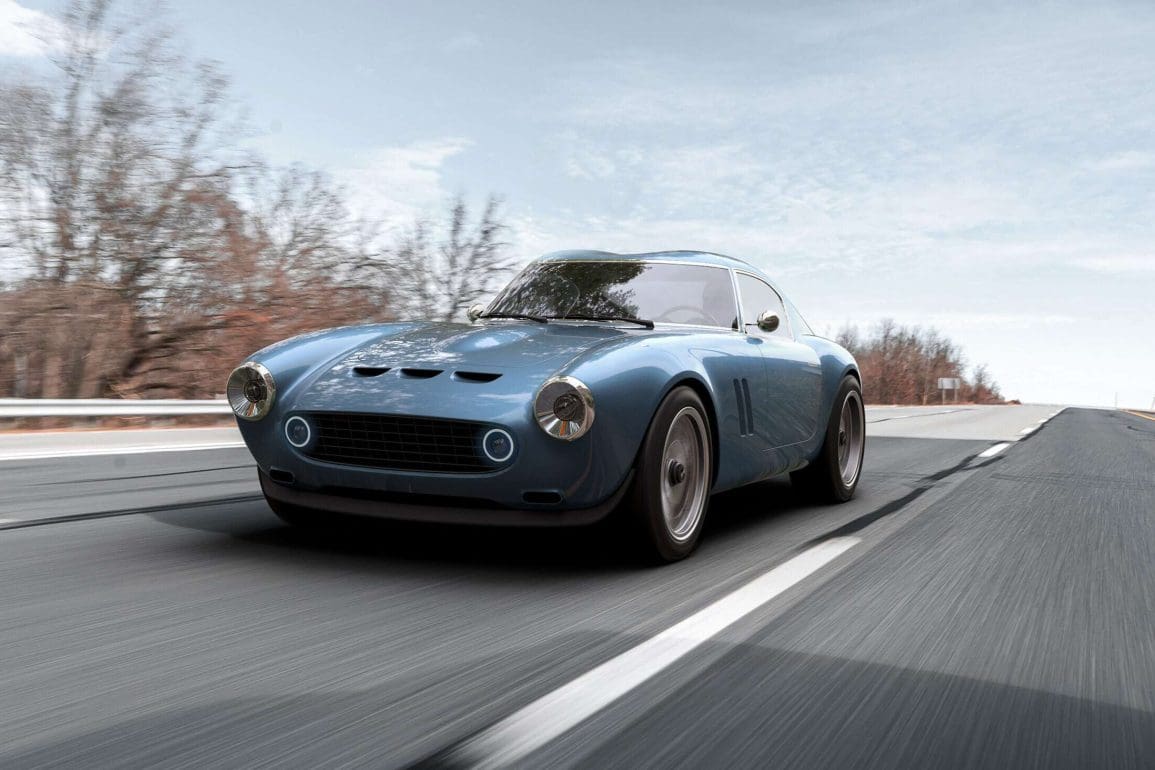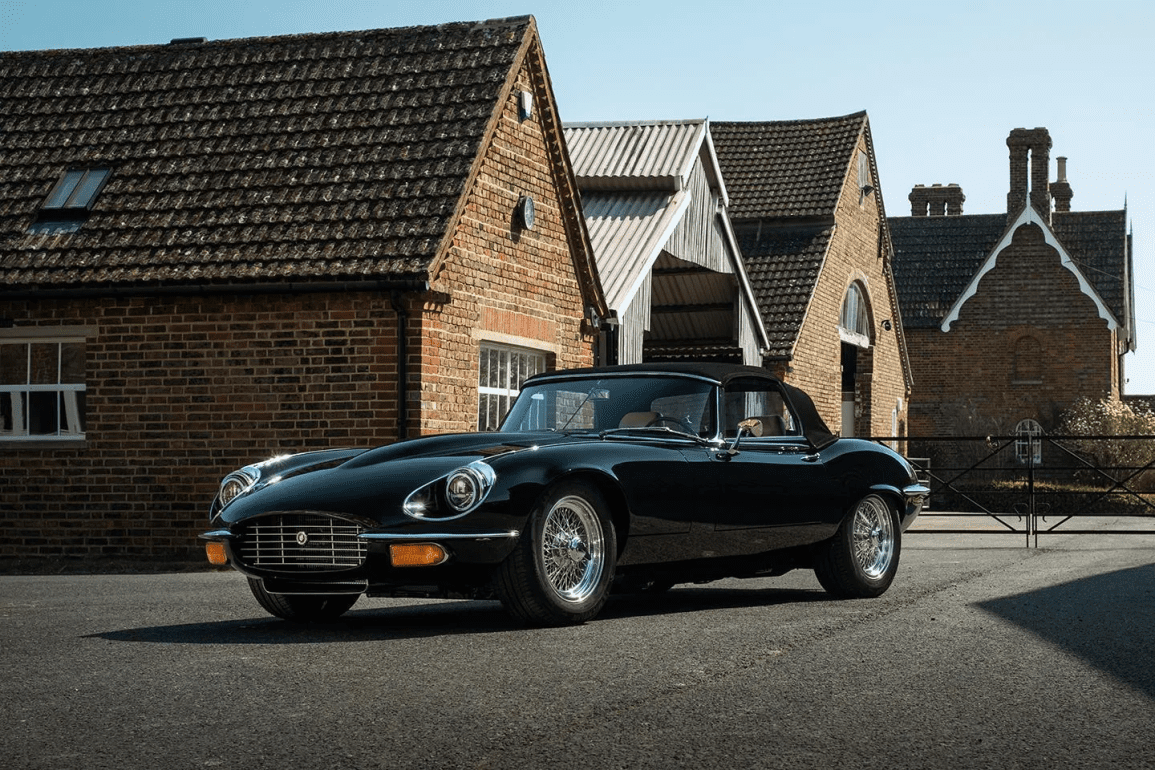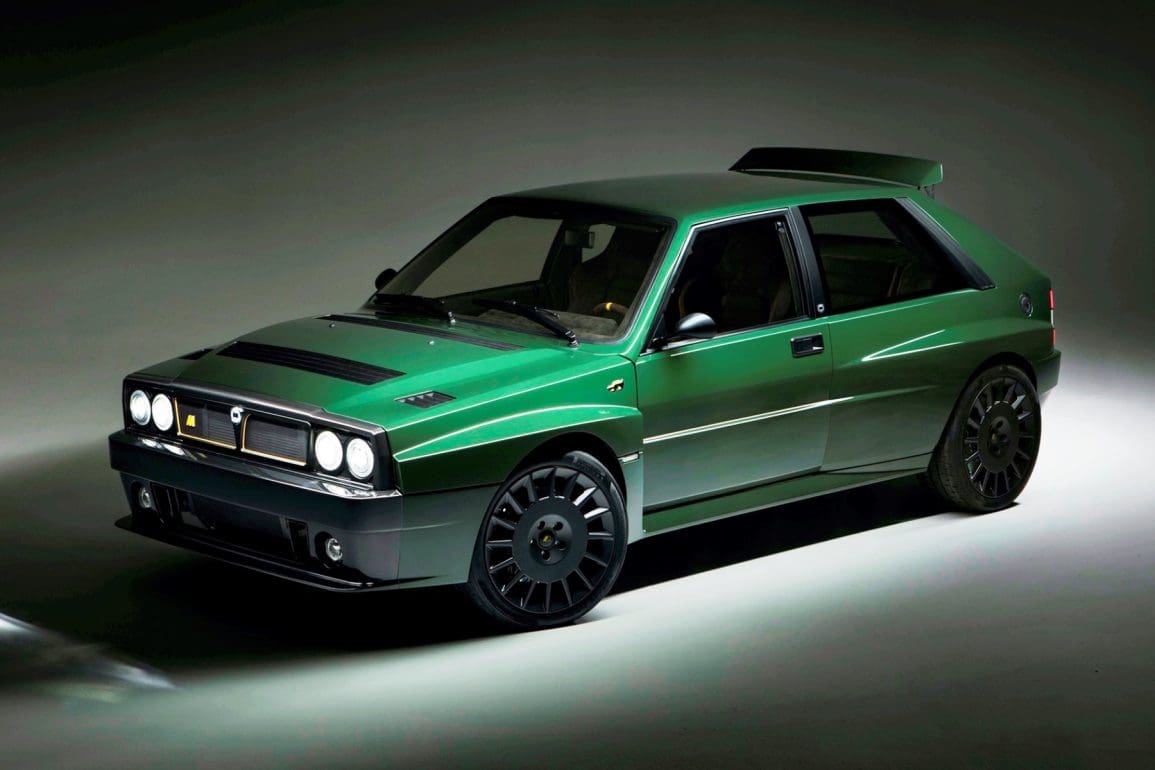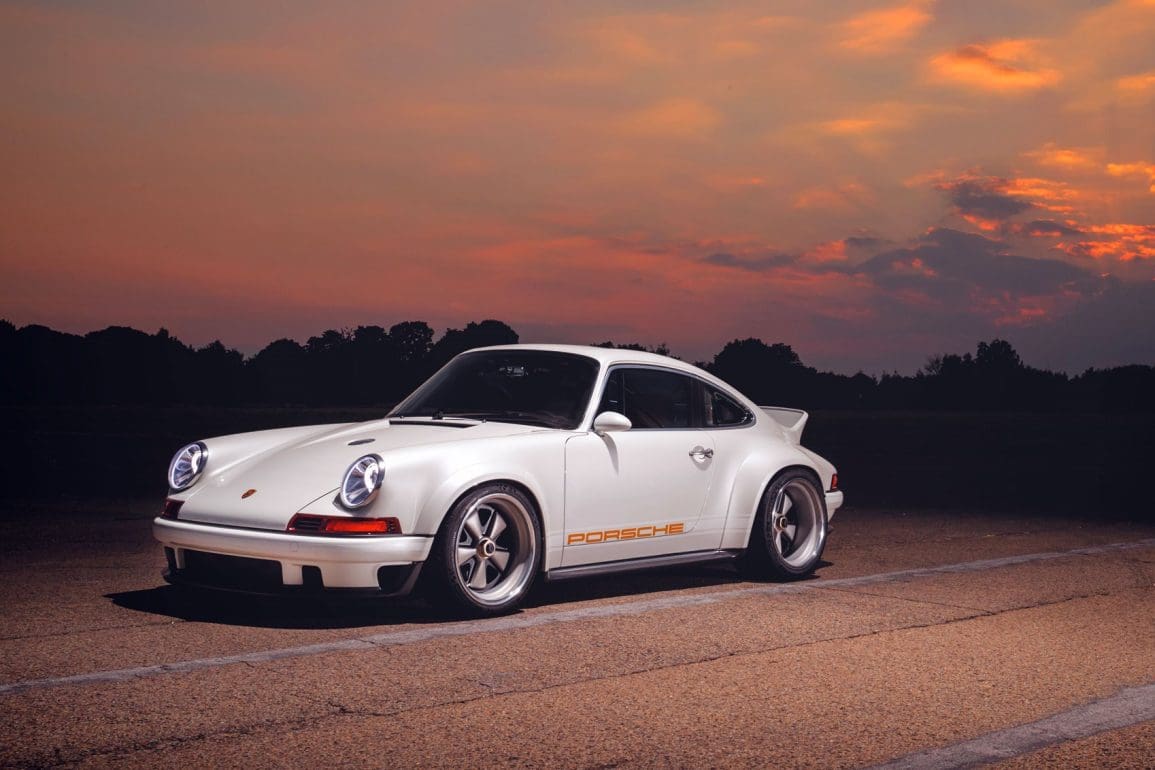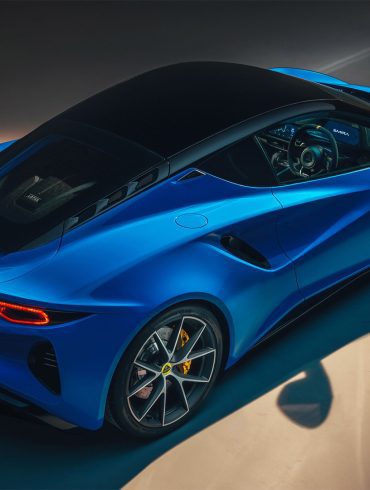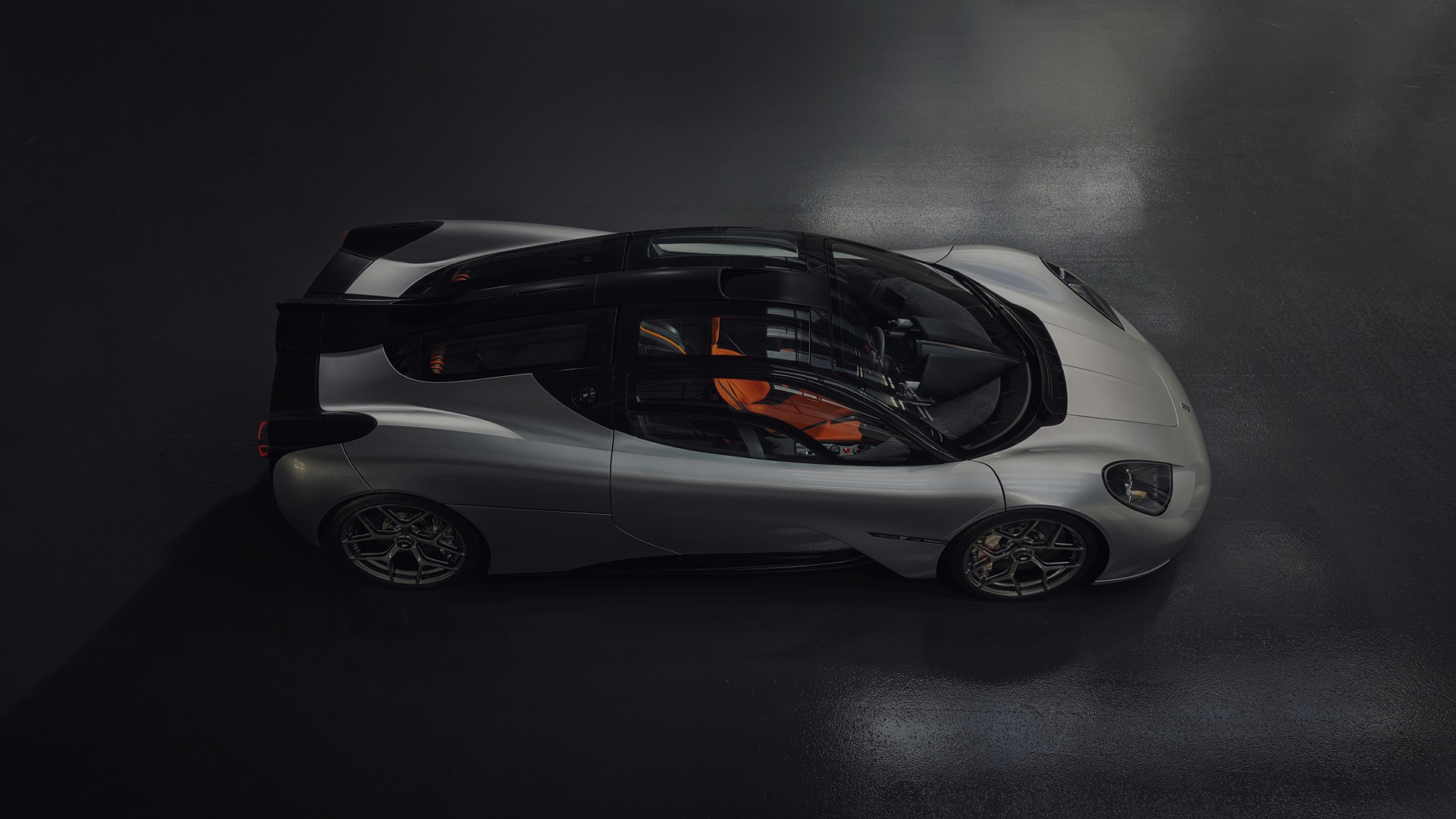The 30 Coolest / Epic Restomods Ever
Classic style reimagined for today
There’s something special about giving a classic car a second life, with all the charm of the original, but none of the headaches. In an age where nostalgia and technology collide, builders worldwide are reimagining icons with cutting-edge craftsmanship. From subtle upgrades to full-blown reinventions, these projects celebrate the best of both worlds, and prove that classics never really go out of style.
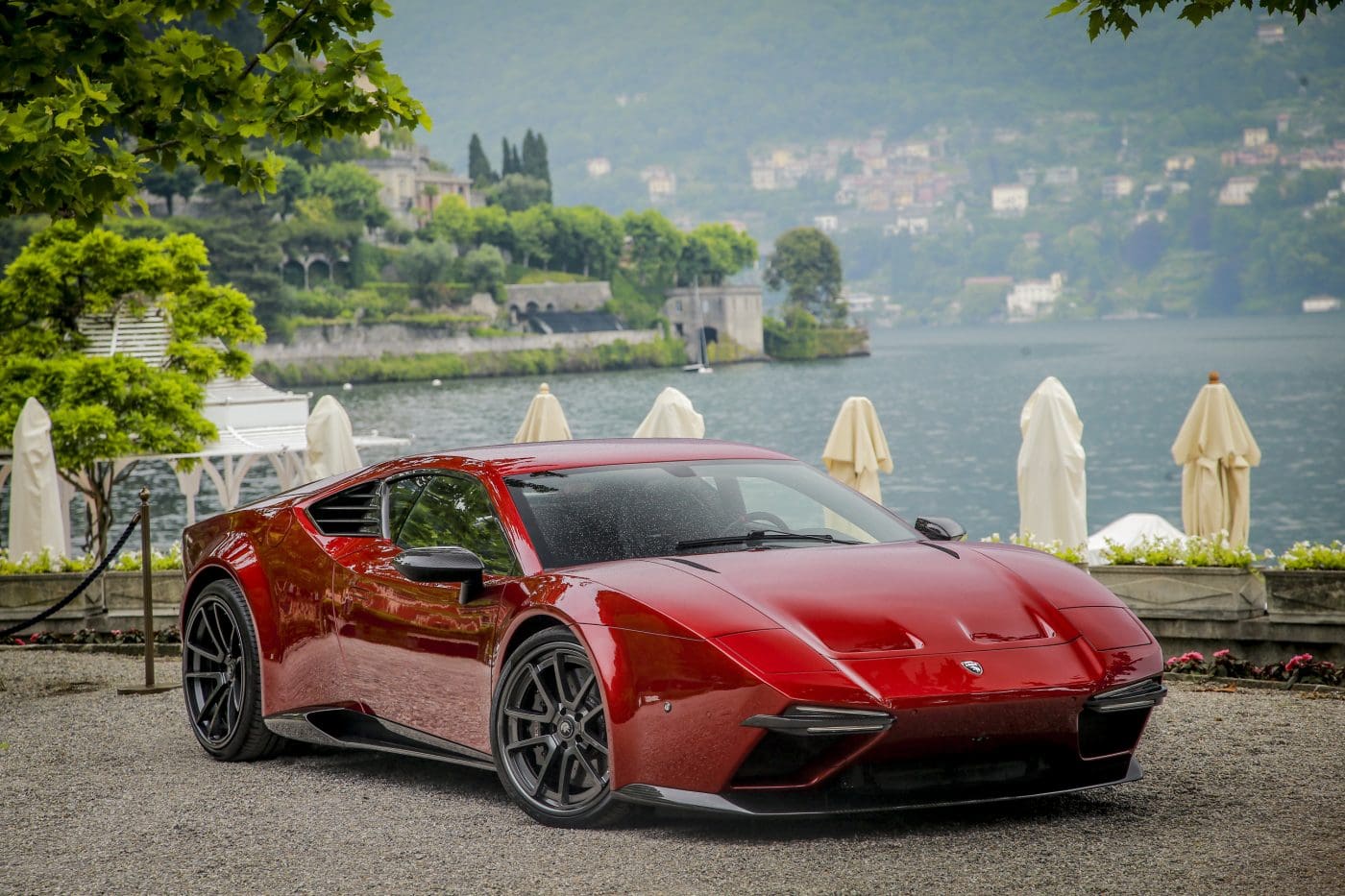
These restomods bring classic cars back to life with modern power and attitude. They’re fast, full of character, and built to be driven, not just admired.
Article Quick Nav
About Our Selections
Restomods are more than just vintage cars with new parts, they're a blend of heritage and innovation, created by builders who know how to respect the past while embracing the present. For this list, we looked for projects that go beyond basic restorations. These are cars thoughtfully reengineered for today’s roads, often with modern drivetrains, updated suspensions, and subtle design tweaks that enhance performance without losing character.
We focused on craftsmanship, originality, and the ability to balance nostalgia with real-world usability. Some of these builds stay true to the original spirit, while others push the concept into bold new territory. What they all have in common is a deep appreciation for classic design, paired with a modern approach to driving enjoyment.
This collection showcases a wide range of styles, from refined European icons to raw American muscle, all reimagined through the lens of today's technology and creativity.
Alfaholics GTA-R 290
240 hp / 200 lb-ft
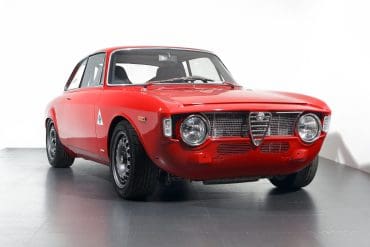
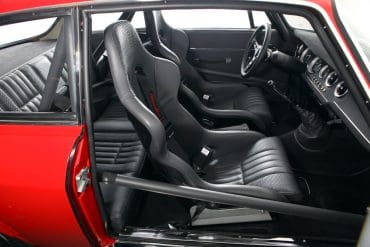
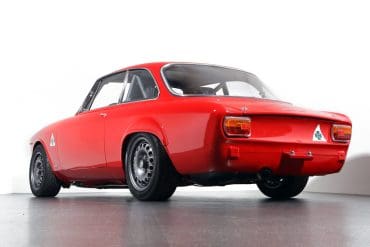
Why We Picked It:
The Alfaholics GTA-R 290 is a thorough reworking of Alfa Romeo’s 105-series coupe, rebuilt with modern engineering while preserving the spirit of the original. Weighing just 830 kg (1,830 pounds), it’s powered by a 2.3-liter Twin Spark four-cylinder producing 240 horsepower at 7,000 rpm. The engine is built in-house with forged internals, a bespoke crankshaft, and a CNC-ported head. It’s paired with a six-speed gearbox and managed by a Motec ECU, offering precise control over fuel, ignition, and data logging.
Much of the car is constructed with lightweight materials, including carbon fiber body panels and a custom cooling system. The suspension has been redesigned for sharper handling, but the layout remains true to the car’s roots—double wishbones up front and a live axle in the rear. The result is a car that feels analog yet precise, with performance that’s accessible on real roads. It’s not about chasing numbers—it’s about refinement through restraint.
Maturo Stradale
400 hp / 398 lb-ft
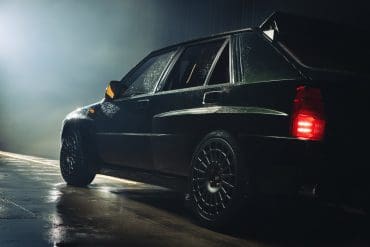
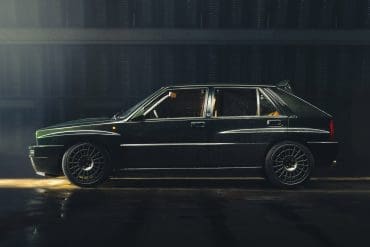
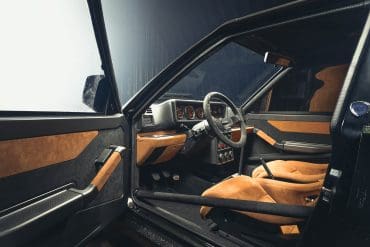
Why We Picked It:
The Maturo Stradale looks like a clean, well-kept Lancia Delta Integrale from the outside, but under the skin, it’s a full-blown Group A rally car built for the road. Starting with an original HF Integrale, Maturo completely reengineers it with modern materials, better tech, and loads of mechanical upgrades. The 2.0-liter turbo four-cylinder now makes 400 horses and 398 lb-ft of torque, thanks to forged internals, a bigger intercooler, a modern ECU, and a rebuilt Garrett turbo.
It still uses a five-speed manual, but the gearbox has been completely strengthened and set up for flat-shifting—though Maturo warns, it’s not for the faint of heart. The chassis is lighter, the suspension fully adjustable, and the brakes far better than anything from the ’90s. Only ten will be built, making this a rare blend of raw rally DNA and daily-driveable usability. It’s what the Integrale always could’ve been—with the right team behind it.
Gunther Werks 400R / Touring
435 hp / 330 lb-ft
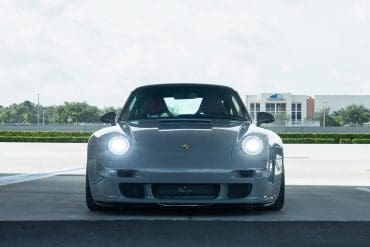
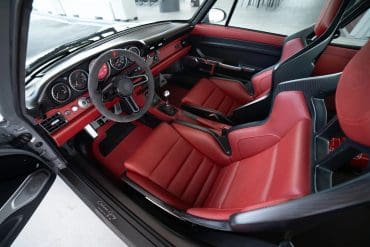
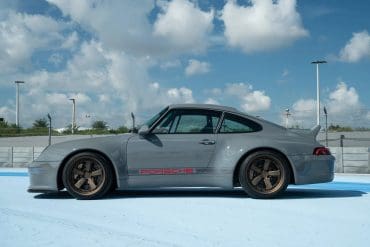
Why We Picked It:
The Gunther Werks 400R is a reimagined Porsche 993, built for those who crave the analog soul of an air-cooled 911 with the precision of modern engineering. Limited to just 25 units, each car is completely stripped and rebuilt with a full carbon fiber body, widened fenders, and bespoke aerodynamic touches. Power comes from a naturally aspirated 4.0-liter flat-six developed by Rothsport Racing, pushing out 431 horsepower and 330 lb-ft of torque. It revs past 7,800 rpm and sounds every bit as wild as it looks.
The Touring variant dials back the aggressive wing in favor of a classic ducktail spoiler and a more subtle silhouette, still unmistakably Porsche, just with sharper edges. Inside, you’ll find a blend of leather, Alcantara, and exposed carbon, all crafted with obsessive attention to detail. It’s a love letter to the final air-cooled generation, reengineered for the modern age without losing the purity that made it great.
Velocity Restorations Ford Mustang
460 hp / 420 lb-ft
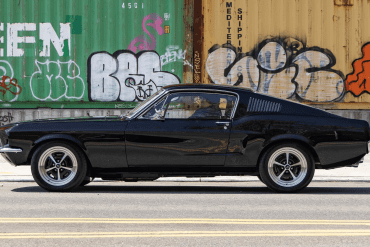
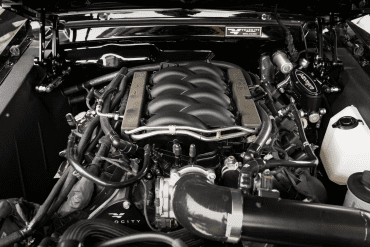
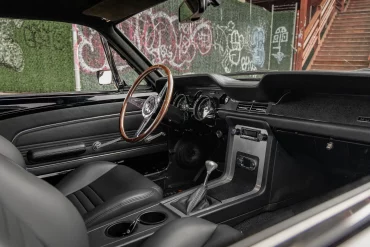
Why We Picked It:
The Velocity Restorations 1968 Mustang is a classic fastback reimagined with modern muscle and a hefty dose of nostalgia. From the outside, it stays true to the original’s lines, chrome trim, deep black paint, and period-correct wheels, but under the skin, it’s a different beast. Built on a Roadster Shop chassis with coilover suspension, rack-and-pinion steering, and big Baer brakes, this Mustang is made to be driven hard.
A 5.0-liter Ford Coyote V8 delivers 460 horsepower and 420 lb-ft of torque through either a 10-speed automatic or six-speed manual, making it faster than most modern muscle. Inside, you get vintage vibes with just enough modern touches: Bluetooth audio, digital gauges, and power windows disguised as old-school cranks. It’s loud, raw, and full of personality—but it’s not without flaws. The ride is stiff, and the price—well over $300K as tested—makes it hard to justify. Still, few cars look this cool or turn heads like a ‘68 done right.
Ringbrothers Valkyrja Camaro
890 hp / N/A lb-ft
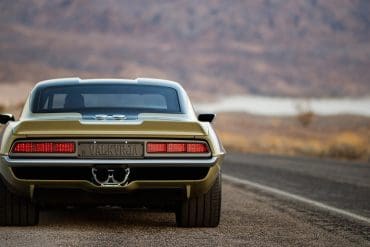
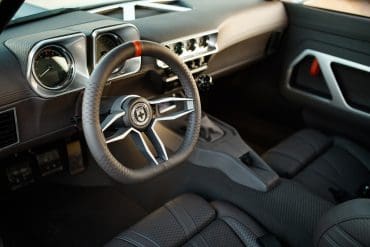
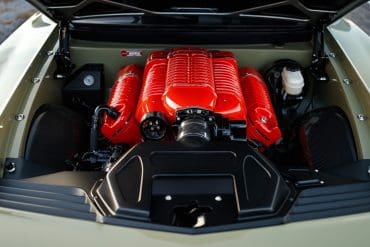
Why We Picked It:
The Ringbrothers' “Valkyrja” Camaro is a 1969 Camaro taken to an entirely different level. Unveiled at SEMA 2019 and crowned one of the show’s top builds, Valkyrja blends classic muscle car attitude with some of the most advanced custom work you’ll ever see. At its core is a supercharged 6.8-liter LS3 V8 putting out a ridiculous 890 horsepower, all channeled through a six-speed manual. The body’s been reworked with carbon fiber and custom metalwork that still honors the original shape, but adds a more aggressive, modern feel.
Underneath, a Roadster Shop chassis and high-end suspension make it handle as well as it looks. Inside, it’s a fully custom job, with leather everywhere, digital displays, and details that feel more like a high-end concept car than a vintage Chevy. Valkyrja isn’t just powerful, but it’s a statement about what’s possible when craftsmanship meets creativity, and it’s one of the wildest Camaros ever built.
Ares Panther ProgettoUno
641 hp / 442 lb-ft
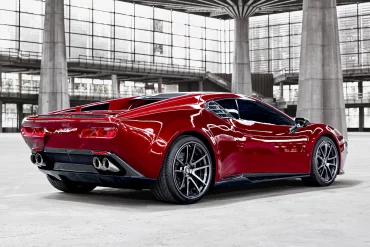
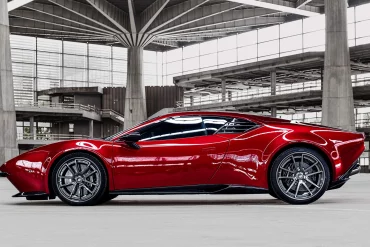
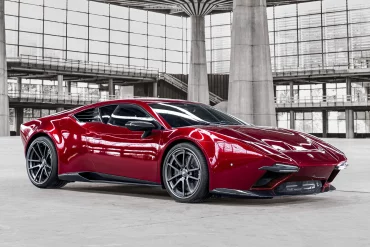
Why We Picked It:
The ARES Panther ProgettoUno is a bold revival of the wedge-shaped supercars that defined the late 20th century, but with a modern heart and cutting-edge craftsmanship. Built in Modena and limited to just 21 units, it blends retro flair with high-performance engineering. Beneath the carbon fiber body lies a 5.2-liter naturally aspirated V10 producing 641 hp and 442 lb-ft of torque, paired with a seven-speed dual-clutch gearbox and all-wheel drive.
It hits 60 mph in just 3.1 seconds and tops out above 200 mph. Inspired by the ‘poster cars’ of the ’70s and ’80s, it features pop-up headlights, a dramatic low-slung profile, and a cabin lined with bespoke leather, Alcantara, and carbon fiber. Underneath, double wishbone suspension and Brembo carbon-ceramic brakes ensure modern handling. While it pays homage to the past, the Panther is no nostalgia act; it’s a fully realized driver’s car, built for those who want classic style with supercar-grade performance.
Cyan Volvo P1800
420 hp / 336 lb-ft
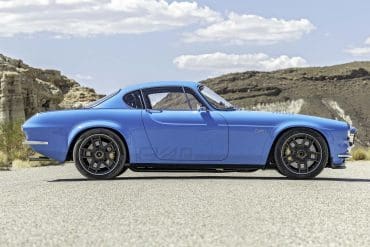
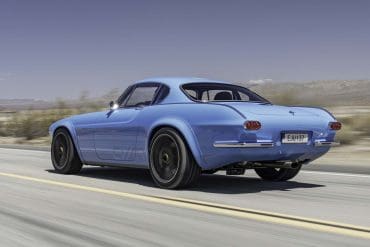
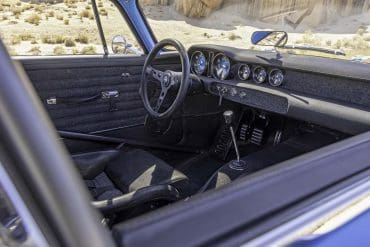
Why We Picked It:
The Cyan Volvo P1800 is what happens when a world championship-winning race team reimagines a 1960s icon with today’s engineering—but none of the modern electronic fluff. Starting with a 1964 Volvo P1800, Cyan Racing rebuilt it from the ground up using high-strength steel and structural carbon fiber, resulting in a featherweight 2,182-pound chassis. Power comes from a 2.0-liter turbocharged four-cylinder pushing 420 horsepower and 336 lb-ft of torque, mated to a bespoke five-speed Holinger manual and rear-wheel drive.
There’s no ABS, no traction control, and no brake booster, just a direct, analog connection between you and the road. Suspension is fully adjustable with double wishbones and custom Cyan dampers, while a torque-biasing limited-slip diff keeps the rear planted and playful. With razor-sharp steering, a high-revving motor, and just enough grip to slide when provoked, the P1800 Cyan captures the thrill of driving, distilled to its purest form.
Vision 148 RS500 Carbon Piranha
493 hp / 405 lb-ft
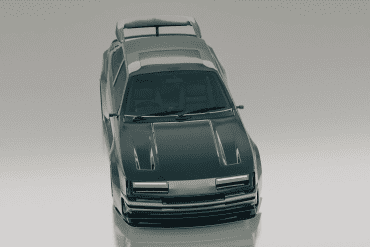

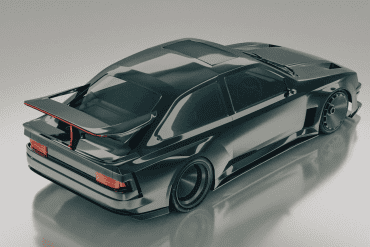
Why We Picked It:
The Vision 148 “Carbon Piranha” is a wildly ambitious reimagining of the legendary Ford Sierra RS500 Cosworth, built to showcase cutting-edge design, materials, and manufacturing. Based on car number 148 of the original 500 RS500s, this one-off project brings together names like Cosworth, Yasid Design, and ASM to turn a beloved homologation hero into a carbon-bodied, modern performance machine. The entire car is being 3D scanned and digitally modeled before being rebuilt with advanced composites—hence the “Carbon Piranha” nickname.
Despite the radical transformation, the heart of the car remains pure: a rebuilt Cosworth turbo four-cylinder, honoring the RS500’s iconic motorsport roots. Vision 148 is an interactive experience. Fans who join the Autovision Club get behind-the-scenes access and even a chance to win the finished car. Equal parts preservation and provocation, the Carbon Piranha is a love letter to the RS500 sent from the future.
Redux BMW E30 M3
300 hp / 205 lb-ft

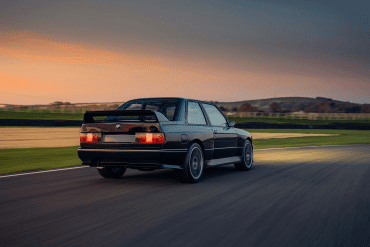
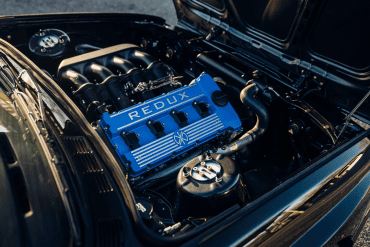
Why We Picked It:
The Redux E30 M3 is a modern take on BMW’s first M3 that stays true to its motorsport roots while updating nearly every part of the car. Built in the UK, each project starts with an original E30 M3 and undergoes about 4,000 hours of work. Most body panels are replaced with carbon fiber to reduce weight, and the chassis is strengthened for better rigidity. Under the hood, the original four-cylinder engine is bored out to 2.5 liters and makes around 300 horsepower and 205 lb-ft of torque, paired with a five-speed dogleg gearbox.
The suspension geometry is reworked, AP Racing brakes are added, and the car now weighs about 2,535 pounds, delivering a sharper, more focused drive than the original. Inside, the updates are subtle but well executed. At around $420,000, including a donor car, it’s a serious investment, but for those who appreciate the E30’s history, it’s a thoughtfully built tribute.
Everrati Porsche 911 (964) Signature
500 hp / 369 lb-ft
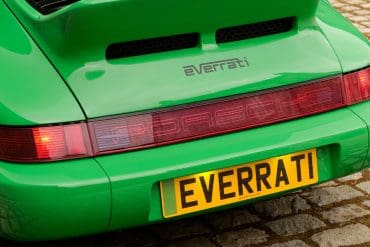
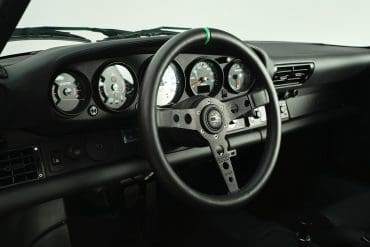
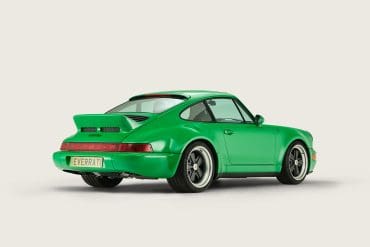
Why We Picked It:
The Everrati Porsche 911 (964) Signature takes one of the most beloved 911 generations and reimagines it as a fully electric restomod, without losing the spirit of the original car. Based on the 1989–1994 964 platform, each build begins with a full restoration by Porsche specialists before being converted to electric power. A 62kWh battery feeds a rear-mounted electric motor producing 500 horsepower and 369 lb-ft of torque, delivering a 0–60 time under 4 seconds and an estimated range of around 200 miles.
Weight and balance are carefully managed to stay close to the original car’s specs, and a Quaife limited-slip differential helps keep the power usable. Electronically adjustable suspension and regenerative braking come standard, along with a modern HVAC system and Apple CarPlay integration. While purists may hesitate, Everrati’s goal is clear: retain the 911’s analog charm, but make it future-ready and reversible. It’s a thoughtful, zero-emissions tribute to a classic shape.
Prodrive P25
440 hp / 457 lb-ft
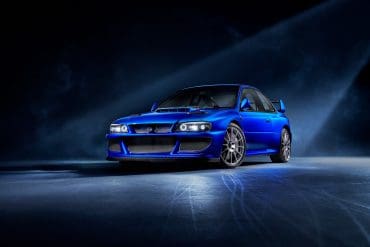
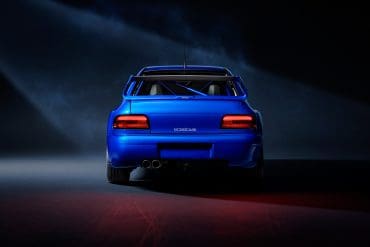
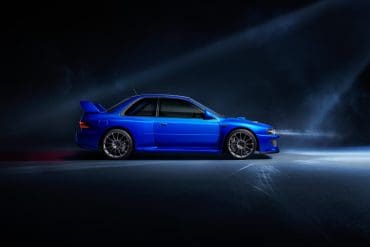
Why We Picked It:
The Prodrive P25 is a modern tribute to one of rally’s most iconic road cars: the Subaru Impreza 22B. However, it has been reengineered with today’s tech and track-bred performance. Under the carbon-bodied shell is a 2.5-liter turbocharged flat-four making over 400 horsepower and 443 lb-ft of torque, paired with a six-speed sequential gearbox that shifts in just 80 milliseconds. A WRC-style launch control system takes care of first through third gear automatically, propelling the car from 0–60 mph in under 3 seconds.
Power is sent to all four wheels via active center and limited-slip differentials, while Bilstein-adjustable dampers and a wider track sharpen the handling. Massive AP Racing brakes bring serious stopping power, and Bridgestone Potenza Sport tires keep everything in check. With just 25 units planned, the P25 is equal parts nostalgia and cutting-edge engineering, built not to mimic the past, but to push it forward with more thrills.
Mechatronik Mercedes W111 Coupe
360 hp / 376 lb-ft
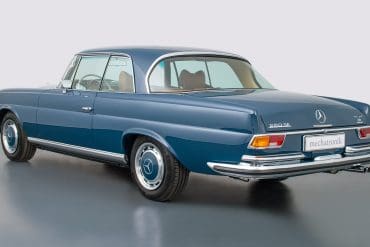
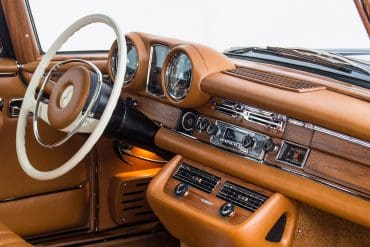
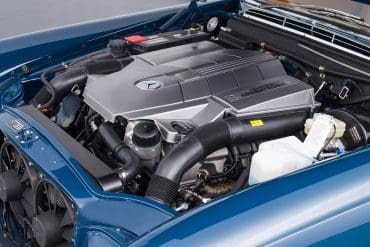
Why We Picked It:
The Mercedes-Benz W111 restomod brings new life to one of the most elegant grand tourers of the 1960s, blending stately design with modern performance and comfort. Originally celebrated for its clean lines and “fintail” styling, the W111 coupe is now reimagined with an updated powertrain, often a naturally aspirated 5.5-liter V8 producing around 360 horsepower and 376 lb-ft of torque. Paired with a modern automatic or manual transmission, it delivers smooth, confident acceleration while preserving the car’s refined character.
Underneath, upgraded suspension, disc brakes, and reinforced chassis components bring handling and safety closer to modern standards. Inside, the cabin retains its wood trim and vintage charm but adds subtle touches like climate control, modern infotainment, and improved sound insulation. These builds aren’t flashy; they’re sophisticated, understated, and built for those who appreciate craftsmanship over flash. It’s a classic Mercedes made to be driven, not just admired in a collection.
Totem GT Electric
590 hp /660 lb-ft
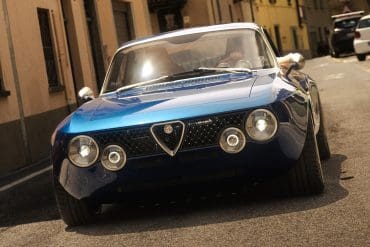
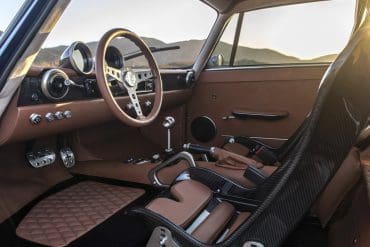
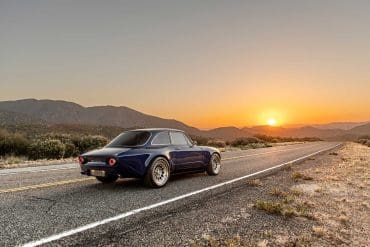
Why We Picked It:
The Totem GT Electric is a bold reinvention of the classic Alfa Romeo Giulia GT that ditches combustion for a high-performance electric soul. While it stays true to the original’s silhouette, nearly everything else is modernized, including a new carbon fiber body and a bespoke chassis. Power comes from an electric motor producing 590 horsepower and 664 lb-ft of torque, launching the car from 0 to 100 km/h (0–62 mph) in under 3 seconds.
The 81kWh battery pack offers a range between 250–310 miles, housed in a lightweight aluminum honeycomb case. Totem’s proprietary ECU manages three drive modes—Dynamic, Normal, and Advanced Efficiency—through their “DNA” system, letting drivers adjust character on the fly. With a limited-slip differential, DC fast charging, and obsessive attention to detail, the GT Electric aims to prove that electric can still be exciting—especially when it wears a body as timeless as this one.
Eagle Speedster Jaguar E-Type
330 hp / 340 lb-ft
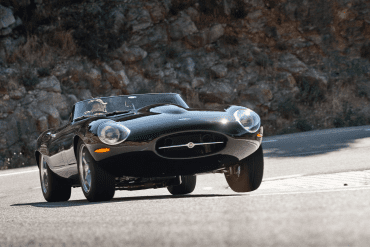
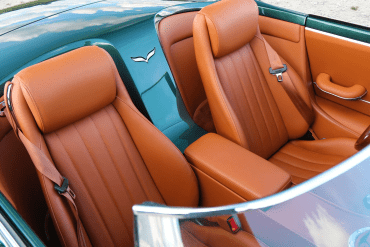
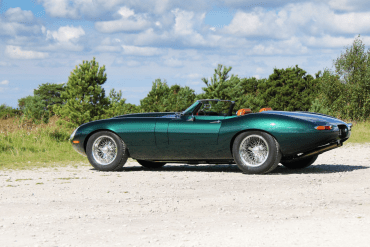
Why We Picked It:
The Eagle Lightweight Speedster is less a restomod and more a handcrafted tribute to one of Jaguar’s greatest achievements. Based on a genuine Series 1 E-Type, Eagle rebuilds the car from the ground up, reimagining it as an ultra-light, open-top roadster inspired by the original factory-built Lightweights of 1963. The result is a car that weighs just 985 kg (2,172 lbs) and delivers over 340 lb-ft of torque from a bespoke 4.7-liter inline-six, paired with a five-speed gearbox.
Every panel is crafted from aluminum, and nearly every mechanical component has been upgraded for modern use without compromising the car’s analog soul. The interior is low-slung and minimal, with hand-finished aluminum and tailored details throughout. From the lowered windscreen to the flush seams and “waterfall” rear deck, it’s both elegant and aggressive. Eagle only builds these to order, each tailored to the customer’s vision. It’s an E-Type, just better in every way that counts.
Thornley Kelham European RS
385 hp / 290 lb-ft
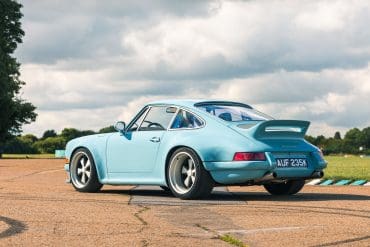
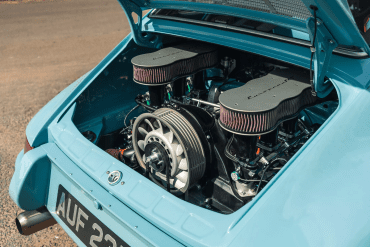
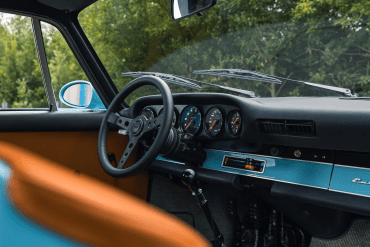
Why We Picked It:
The Thornley Kelham European RS is a refined tribute to the legendary 1973 Porsche 911 Carrera RS 2.7, reimagined to meet modern performance expectations without losing its old-school charm. Inspired by the original’s racing heritage, Thornley Kelham retains the classic silhouette but completely overhauls the mechanicals. Suspension geometry is reworked with bespoke GT3-inspired wishbones, JRZ four-way adjustable coilovers, and a quicker Quaife steering rack that sharpens response and agility.
A G50 six-speed manual gearbox replaces the period five-speed, while the interior mixes hand-stitched Connolly leather, carbon Recaro seats, and updated instruments built into a familiar, minimal layout. Designer Hal Walter describes it as combining the spirit of a ‘73 RSR with the polish of a 997 GT3 RS—raw but road-ready, classic but more capable. The goal was to make the 911 feel as alive and involving today as it did half a century ago.
Alma Sprint
160 hp / N/A lb-ft
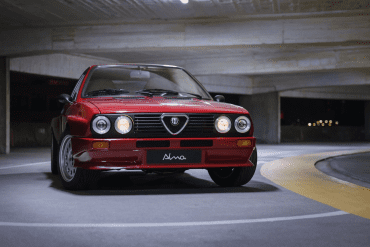
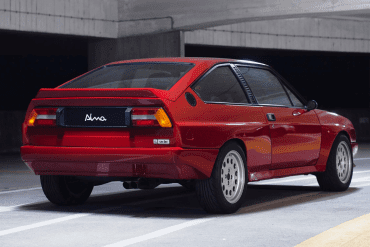
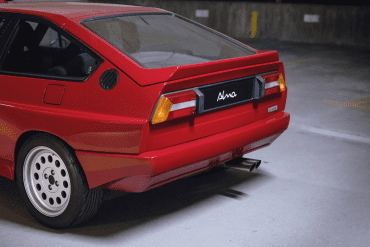
Why We Picked It:
The Alma Sprint is a modern tribute to a forgotten chapter of Alfa Romeo history: the Group B rally-inspired Sprint 6c that never made it past the prototype stage. Built by Portuguese firm Alma, this restomod begins with an Alfasud-based Alfa Romeo Sprint and transforms it into a lightweight, wide-bodied coupe that weighs just 880 kg (1,940 lbs). Under the hood is a re-engineered 1.8-liter flat-four with 160 horsepower and dual Dellorto carbs, mated to a close-ratio 5-speed manual gearbox.
A Torsen limited-slip differential is optional. The car features adjustable suspension, upgraded brakes, and custom composite bodywork with boxy fenders and Hella projectors. Inside, the Sprint gets a full Alcantara and corduroy retrim, Sabelt harnesses, and a Zagato-designed steering wheel. Only 20 units will be built, each tailored to the owner’s vision. It’s a compact, analog machine that blends rally inspiration with modern craftsmanship—bringing back a “what if” from Alfa’s past.
Equus Bass 770
640 hp / 605 lb-ft
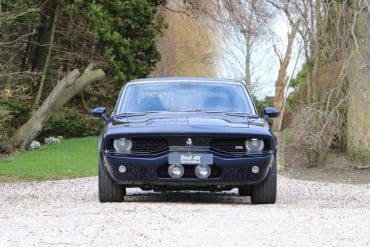
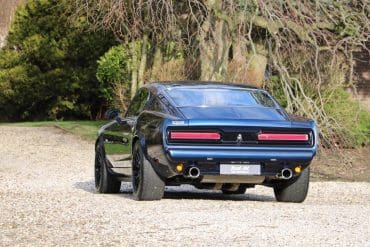
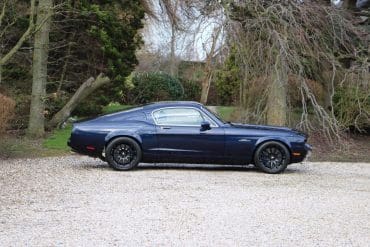
Why We Picked It:
The Equus Bass 770 blends classic American muscle car design with modern engineering to create a grand tourer that’s as powerful as it is refined. Styled after the fastbacks of the late ’60s and early ’70s, the Bass 770 features a handcrafted superformed aluminum body over a carbon fiber structure, paired with a front mid-mounted 6.2-liter supercharged V8 producing 640 horsepower and 605 lb-ft of torque. It launches from 0–60 mph in just 3.4 seconds and reaches a top speed of 200 mph, all routed through a six-speed manual transmission.
Underneath, magnetic ride suspension, carbon-ceramic Brembo brakes, and a modern safety suite bring performance and confidence to match its vintage-inspired looks. With only a few built each year, the Bass 770 isn’t just a tribute, it's a modern American GT in its own right, offering muscle car aesthetics with the handling, comfort, and build quality expected from a contemporary performance machine.
Ringbrothers Defiant AMC Javelin
1,036 hp / N/A lb-ft
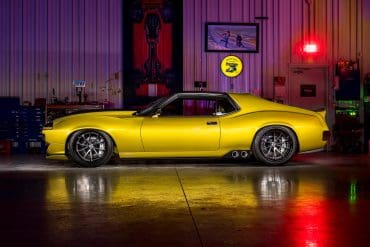
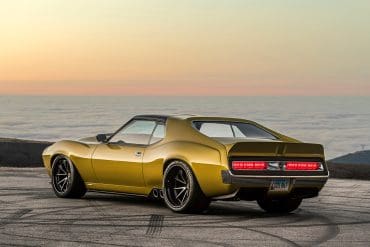
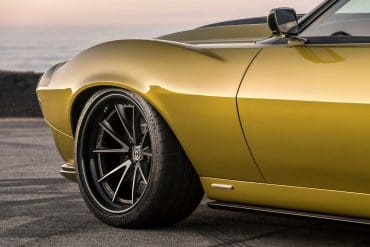
Why We Picked It:
The Ringbrothers “Defiant” is a wild reinterpretation of the 1972 AMC Javelin AMX, transforming a forgotten muscle car into a 1,000+ horsepower showstopper. Unveiled at SEMA, this build retains the spirit of the original but reimagines every detail. Power comes from a 6.2-liter supercharged Hemi V8 from Wegner Motorsports, fitted with a Whipple 4.5L supercharger and managed by a Holley Dominator ECU, producing a staggering 1,036 horsepower. A Bowler-built 4L80E automatic routes power to a Chevy 12-bolt rear end via a carbon fiber driveshaft.
The custom chassis setup includes a DSE front subframe and a Ringbrothers-designed 4-link rear with RideTech shocks. Massive Baer 6-piston brakes, 20-inch HRE wheels, and Michelin rubber keep it planted. Finished in a striking BMW-derived “Jalop Gold” paint, Defiant is a celebration of creativity and craftsmanship, showing that with the right vision, even an underdog like the Javelin can steal the spotlight.
Nardone Automotive Porsche 928
450 hp / 385 lb-ft
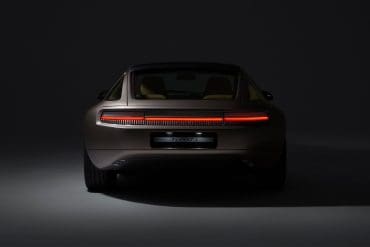
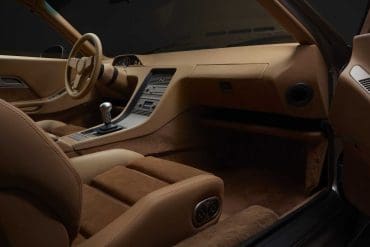
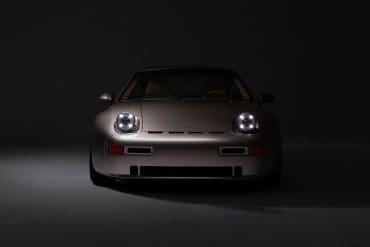
Why We Picked It:
The Nardone Automotive Porsche 928 gives Stuttgart’s often-overlooked V8 grand tourer a second chance, this time, as a carbon-bodied, thoroughly modern restomod. French startup Nardone retains the essence of the 928’s wedge-shaped silhouette, but sharpens the lines with wide arches, a reimagined light bar, and subtly modernized pop-up headlights. Under the hood is a naturally aspirated V8 producing around 400 horsepower, paired with a six-speed manual and limited-slip differential, bringing more engagement and performance than the original ever offered.
Carbon fiber construction helps keep weight down, while modern suspension, power steering, and upgraded brakes promise a significantly improved driving feel. Inside, leather and Alcantara trim surround a refined, minimalist cabin with a classic-style gauge cluster and Porsche’s own CarPlay-enabled PCCM infotainment system. With just the right balance of nostalgia and innovation, Nardone’s 928 brings fresh credibility to a misunderstood Porsche, blending GT comfort with a sharper, more modern edge.
BorromeodeSilva Mustang SLT1
444 hp / 380 lb-ft
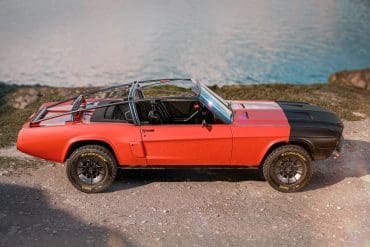
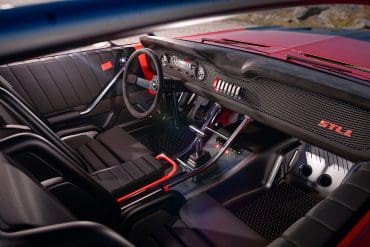
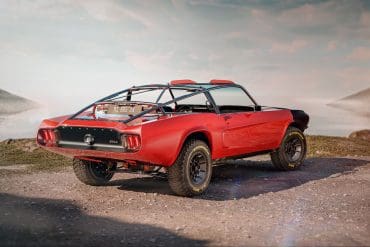
Why We Picked It:
The BorromeodeSilva Mustang SLT1 is an American muscle car filtered through a distinctly Italian lens, equal parts road trip machine and design statement. Born from creative director Carlo Borromeo’s 2008 drive down the Panamericana in a 1968 Fastback, the SLT1 was envisioned as the ultimate all-terrain Mustang. Now, years later, that vision is real. Heavily modified inside and out, the SLT1 runs a 5.0-liter Boss 302 “Road Runner” V8 producing 444 horsepower and 380 lb-ft of torque, known for its high-revving character and forged internals.
The aesthetic is rugged but refined, with a lifted stance and minimalist, rally-inspired design cues that nod to both American muscle and European sensibility. Built in collaboration with teams in both the U.S. and Europe, the SLT1 is still a passion project, but one that could see limited production. It’s an offbeat blend of old-school Detroit power and Milanese design culture, made for the long road ahead.
RML Short Wheelbase
478 hp / 419 lb-ft
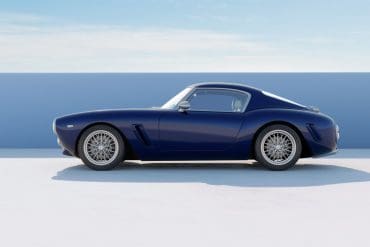
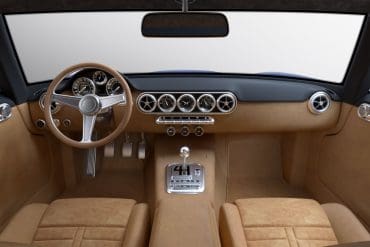
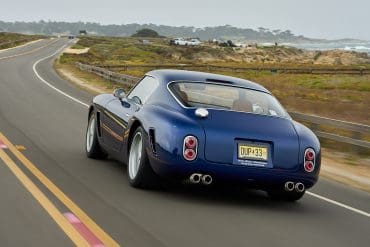
Why We Picked It:
The RML Short Wheelbase is a modern homage to the legendary Ferrari 250 SWB, built not in Maranello but by British motorsport specialists RML. Underneath its carbon fiber bodywork lies the heart of a Ferrari 550 Maranello, a 5.5-liter naturally aspirated V12 paired with a six-speed gated manual transmission, now restored to its full 485 horsepower. Designed for real-world usability, it weighs about 3,300 pounds and includes essentials like Apple CarPlay, air conditioning, and a reversing camera, all integrated with period-correct simplicity.
The cabin is wrapped in tan leather and brushed metal, echoing classic GTs but built to modern standards. Just 30 cars will be made, each hand-assembled and tailored to its owner. The result is a car that blends old-school charm with new-age livability, effortless to drive, yet deeply engaging. It’s not about chasing lap times, but celebrating the joy of driving, one gated shift and high-revving V12 blast at a time.
Tuthill Porsche 911K
478 hp / 419 lb-ft
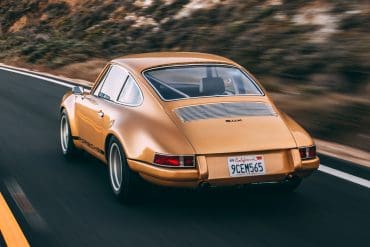
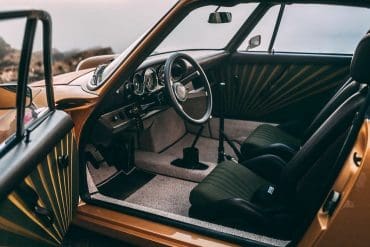
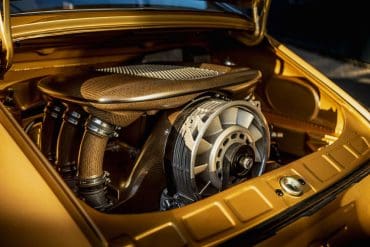
Why We Picked It:
Built by rally and motorsport specialists Tuthill Porsche, the 911K is a featherweight homage to early ’70s 911s, engineered for pure driver engagement. Nearly every body panel is made from carbon fiber, including the roof, bonnet, bumpers, and even the wheels, resulting in an ultra-low curb weight and razor-sharp response. At its core is a 3.1-liter flat-six that revs to a screaming 11,000 rpm, producing around 350 horsepower. Power is sent through a custom six-speed gearbox with a magnesium case, and a motorsport-grade pedal box completes the setup.
Inside, the 911K strips away all distractions: no stereo, no heater, no excess. A carbon-fiber dash and titanium roll cage keep things light but purposeful, while retro-styled seats bring a touch of vintage flair. Every choice on the 911K serves one purpose: to connect the driver with the road. It’s a modern machine with an old-school soul, raw, responsive, and deeply rewarding to drive.
Kimera EVO37
500 hp / 406 lb-ft
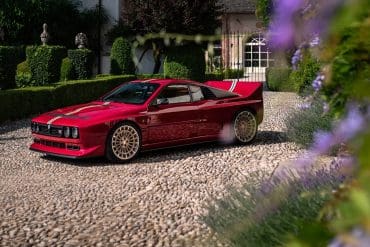
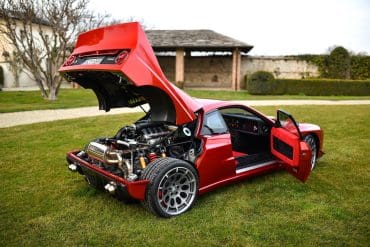
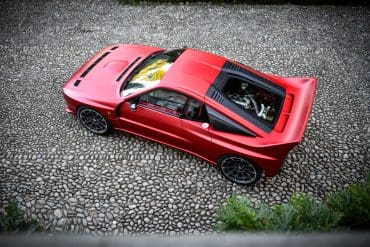
Why We Picked It:
The Kimera EVO37 is a modern reimagining of the legendary Lancia 037 Group B rally car, blending classic lines with contemporary engineering. Hand-built in Italy, it pays tribute to the last rear-wheel-drive car to win the WRC, while offering performance that rivals today’s supercars. Under the hood sits a reworked 2.1-liter turbocharged and supercharged four-cylinder engine, developed with input from the original Lancia engineers. It produces over 500 horsepower and 406 lb-ft of torque, channeled through a six-speed manual gearbox to the rear wheels.
The body, shaped in carbon fiber, retains the wedge-like proportions of the original but with modern fit, finish, and materials. Inside, the EVO37 strikes a balance between retro charm and modern usability, with analog gauges, Alcantara trim, and carbon detailing. Built in limited numbers, the EVO37 is a love letter to rallying’s golden era, reborn with precision and passion for modern roads.
Icon Derelict 1949 Mercuru Coupe
400 hp / 406 lb-ft
Why We Picked It:
The Icon Derelict 1949 Mercury Coupe flips the script on what an electric vehicle can be. It merges vintage Americana with cutting-edge EV tech in a restomod that defies expectations. Developed in collaboration with Stealth EV, this hand-built coupe retains its original patina but hides a thoroughly modern dual-motor electric drivetrain delivering 470 lb-ft of torque and the equivalent of 400 hp, no gears, no shifts, just seamless thrust up to 120 mph.
Powered by a Tesla-sourced 85kWh Performance battery pack, it offers an estimated 150–200 miles of range with fast-charging support via CHAdeMO and Tesla Supercharger connectors cleverly hidden in the original fuel filler and front plate. Underneath, an advanced battery and thermal management system ensures performance and safety. Icon’s Mercury was brought to life as a philosophical challenge to the sterile image of electric cars. It proves you can have soul, style, and silence in one awesome package.
David Brown Automotive Mini eMastered
97 hp / 129 lb-ft
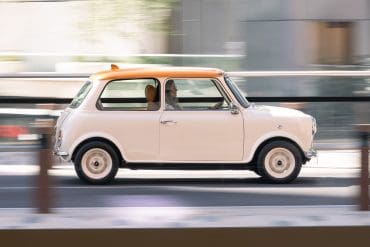
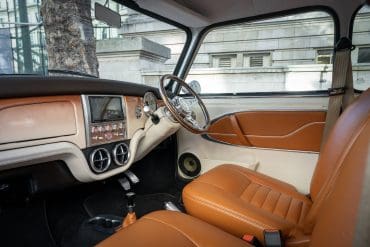
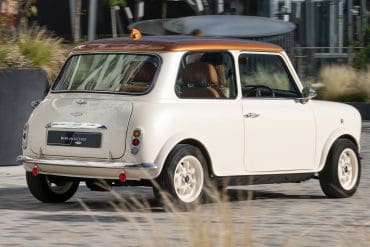
Why We Picked It:
David Brown Automotive’s Mini eMastered is a modern rethink of the classic British icon, smaller in size but big on craftsmanship. Based on a brand-new bodyshell and using a 97-hp electric motor from EV specialist Fellten, this tiny 640-kg machine keeps the original Mini’s nimble handling while ditching its mechanical quirks. It’s not meant for long hauls, but its 110-mile range and zippy 8.5-second 0–62 time make it ideal for city life. Inside, it trades budget vinyl for plush leather, knurled aluminum, and a refined cabin with Apple CarPlay, A/C, and LED lights.
The eMastered retains the Mini’s upright driving position and cartoonish agility, but with smoother power delivery and quieter performance. It’s fast enough to be fun, tiny enough to feel special, and refined enough to use every day. At £150,000, it’s a luxury indulgence, but for those who love the Mini and want it reborn for the EV era, it hits a sweet spot.
Paul Stephens Autoart 911 Touring Series II
240-290 hp / N/A lb-ft
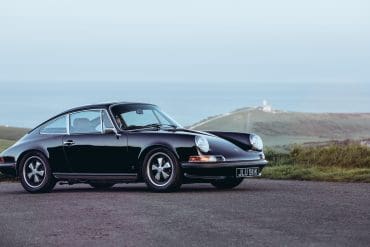
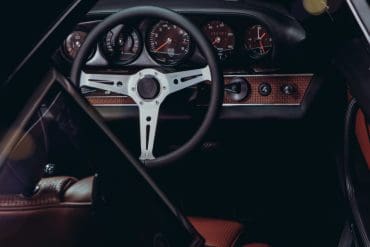
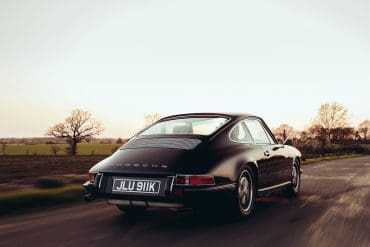
Why We Picked It:
The Paul Stephens Autoart 911 Touring blends classic 911 design with modern engineering, offering a purist’s take on Porsche’s iconic silhouette. Based on early 1970s G-series cars, the Touring captures the spirit of vintage motoring, but with thoroughly reimagined underpinnings. Two versions are offered: the “Classic,” with a 3.2-liter air-cooled flat-six making 240 horsepower, and the “Classic S,” which bumps output to 290 horsepower thanks to a 3.4-liter engine with individual throttle bodies and performance cams developed in-house.
Weighing significantly less than a modern 911 and featuring a stripped-back interior, the Autoart 911 Touring feels raw and connected, yet remains civilized enough for long drives. The Classic S hits 60 mph in under five seconds and keeps pulling beyond 160 mph, easily surprising newer sports cars along the way. True to the ethos of Paul Stephens' builds, the Touring is less about numbers and more about driver engagement, and in that, it delivers.
GTO Engineering Squalo
460 hp / 420 lb-ft
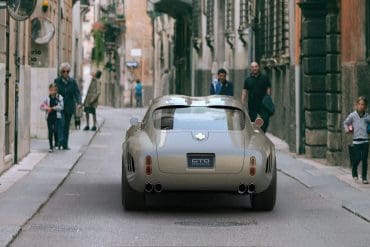
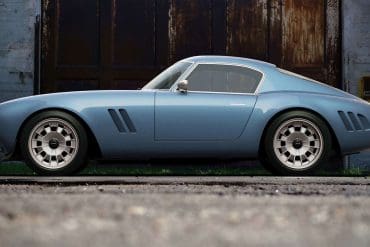
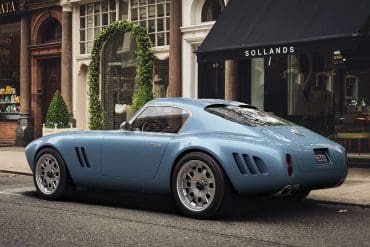
Why We Picked It:
The GTO Engineering Squalo isn’t just a restomod but a ground-up rethink of what a classic front-engined V12 sports car could be if built today. Inspired by 1960s icons like the Ferrari 250 SWB, the Squalo blends vintage proportions with fresh engineering. At its heart is a brand-new 4.0-liter naturally aspirated V12, designed and built entirely in-house. It revs to a screaming 10,000 rpm and delivers over 460 hp, paired with a six-speed manual for the kind of driving connection that's all too rare today.
With no power steering, no touchscreens, and no hybrid trickery, the Squalo is all about purity. The body is ultra-lightweight, the suspension is finely tuned, and the total weight comes in under 1,000 kg. It’s not just paying tribute to the past, it’s carrying that spirit into the future, with a car that’s as thrilling to drive as it is beautiful to look at.
E-Type UK Unleashed
435 hp / 390 lb-ft
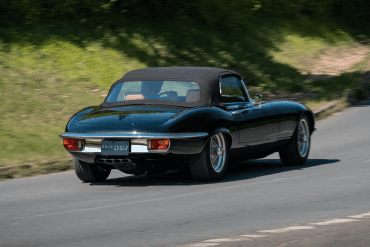
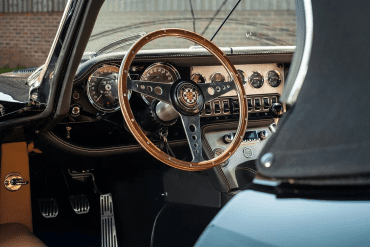
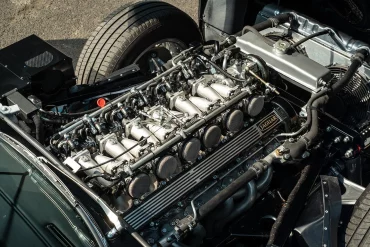
Why We Picked It:
The Jaguar E-Type is often called the most beautiful car ever made, but E-Type UK’s Unleashed takes that legacy and reworks it for the modern era. Based on the Series 3 V12 Roadster, the Unleashed is a full ground-up rebuild that updates the classic British sports car with carefully considered enhancements. Think of it as a respectful reinvention rather than a radical restomod. Under the hood is a reworked 6.1-liter version of Jaguar’s original V12, now delivering over 400 horsepower with modern fuel injection and a custom stainless steel exhaust.
The suspension, brakes, and cooling system have all been upgraded to handle the extra performance, while a five-speed manual transmission adds everyday usability. Inside, it’s all about craftsmanship, hand-stitched leather, modern gauges, integrated navigation, and air conditioning, which bring comfort to the classic silhouette. The result is a car that looks timeless but feels tailored for today: fast, refined, and unmistakably E-Type.
Automobili Amos Lancia Delta Futurista
330 hp / N/A lb-ft

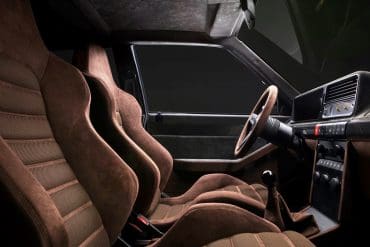
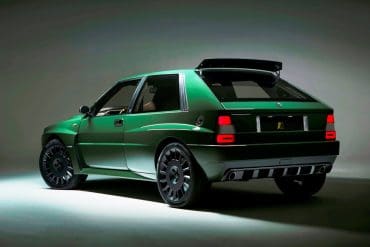
Why We Picked It:
The Lancia Delta Integrale is already a rally legend, but the Futurista by Automobili Amos reimagines that icon with a deeply personal and obsessive level of craftsmanship. Spearheaded by Eugenio Amos, this project is a modern reinterpretation built with passion and precision that serves as a tribute to the Group A hero. Each Futurista starts life as a Delta HF Integrale 16V before being completely stripped down and rebuilt with an extensive use of carbon fiber.
The boxy silhouette remains, but the body is now three-door instead of five, and design details are sharpened for a more aggressive stance. Under the hood, a rebuilt 2.0-liter turbocharged engine sends about 330 horsepower to all four wheels, far beyond what the original could offer. Only 20 units are being built, each tailored to its owner. The Futurista blends nostalgia with cutting-edge engineering, creating something that feels both reverent and refreshingly new.
Singer DLS
500 hp / 317 lb-ft
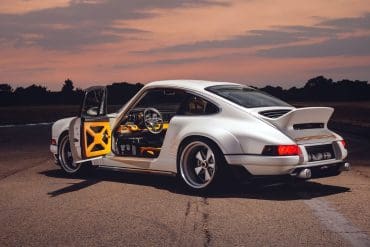
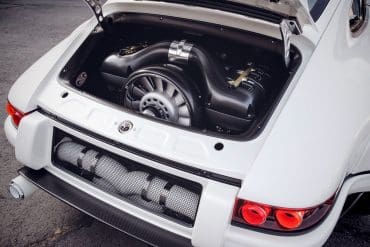
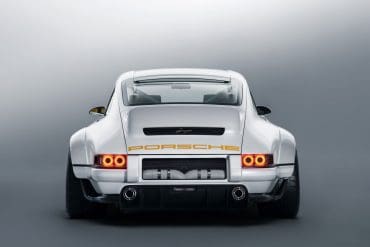
Why We Picked It:
The Singer DLS, short for Dynamics and Lightweighting Study, is the result of a deep technical collaboration between Singer Vehicle Design and engineering giants like Williams Advanced Engineering and Bosch. Based on a Porsche 964, the DLS is a radical rethink of what a classic 911 can become when engineering is given a blank check and a clear mission: maximize performance without losing the soul of the air-cooled era.
Its carbon fiber bodywork is designed not just to look stunning but to reduce drag and increase downforce. Underneath, a reworked 4.0-liter naturally aspirated flat-six revs to 9,000 rpm and produces 500 horsepower, breathing through a set of individual throttle bodies. Everything from the suspension to the interior has been overhauled with weight savings and driver involvement in mind. Rather than chasing lap records, the DLS is about elevating the 911 experience to its most focused form.


